The Internationalist
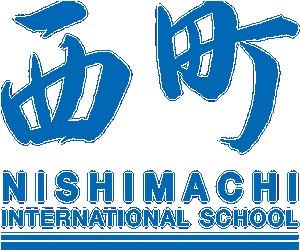

Nishimachi International School Fall/Spring 2022-2023 Vol. 69
Head of School
Director of Advancement
Advancement Office:
Alumni Relations/Advancement Officer
Communications / Community Liaison
Design and Editing
Karen O’Neill ’78
Mary Margaret Mallat
Mayumi Nakayama ‘90
Kacie Leviton ‘95
Martina Schaefer
Contributing Editor Anne Papantonio
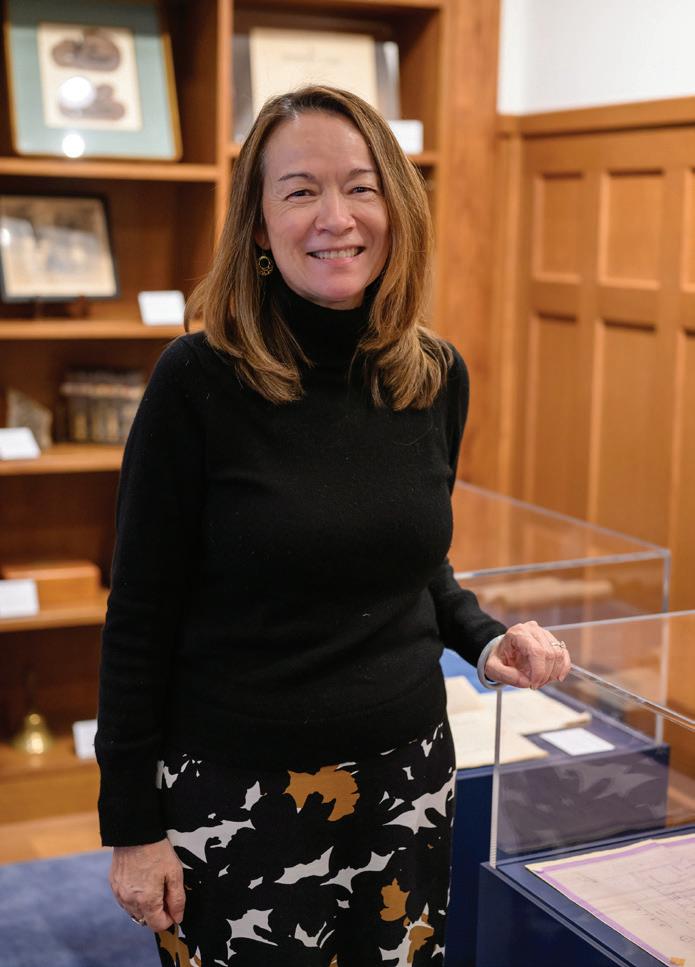
The Internationalist, Fall/Spring 2022-2023 Vol.69, is published by the Advancement Office for the alumni, parents, students, faculty, staff and friends of Nishimachi International School.
Being Together Again !
Our school’s strong sense of community is one of its defining characteristics, and it enriches the learning experience in our classrooms every day. In this issue of The Internationalist, you’ll find numerous events and stories that celebrate our connection and pride in Nishimachi. The theme of “Being Together Again” is prominent throughout the issue, highlighting our desire to come together as a community. I invite you to explore all that has been happening.
Article Contributors
Andrew R. Deane
Mary Margaret Mallat
Mayumi Nakayama ‘90
Hiromi Narita
Michael S. Strickland Grade 8 Students 2022-23:
Melanika S, Lila W. Grade 9 Students 2022-23:
Mica de G, Tamaki H, Reina I, Ema K, Yui K, Luna O, Ryota O, Anna S, Matthew S, Lena T, Ami Y, and Seungheon (Harry) Y.
Photography
Jesse Dittmar
Joanne Elliott
Kiyoshi Endo
Christina Fogle
Toshiharu Kitajima
Kacie Leviton ’95
Joan Marcus
Shinya Masuda
Matthew Murphy
Mayumi Nakayama ‘90
Benjamin Parks
Diane Wiltshire
Evan Zimmmerman
As we witness the growth of young children, we never know when a simple spark of interest will shape their future in profound ways. We are proud to share the inspiring story of Kennedy Kanagawa ‘00, whose passion for performing was ignited in Grade 3 and has led him all the way to Broadway. In this issue, you’ll also read about current students who are forging personal connections inside and outside the classroom, and sharing their perspectives with our community.
We are pleased to announce the final chapter of the Matsukata House 100th Anniversary Campaign, culminating in the opening of the Matsukata House Museum. We are deeply grateful to all who have helped us to transform this iconic school building to a dynamic space for learning, once again. I invite you to explore the museum during your next campus visit and join us in reconnecting with each other by sharing your individual stories about Nishimachi.
Karen O’Neill ‘78 Head of School
Nishimachi International School
Advancement Office
2-14-7 Moto Azabu, Minato-ku Tokyo 106-0046 Japan
Tel:
E-mail:
03-3451-5520
advancement@nishimachi.ac.jp
alumni@nishimachi.ac.jp
www.nishimachi.ac.jp
Web: 学校法人 西町インターナショナルスクール
〒 106-0046 東京都港区元麻布 2-14-7 渉外開発室
電話: メール :
ウェブ:
03-3451-5520
advancement@nishimachi.ac.jp
alumni@nishimachi.ac.jp
www.nishimachi.ac.jp
Front Cover Photo: Middle School Cross Country Co-ed Team with coaches M. Paxton and A. Kostic


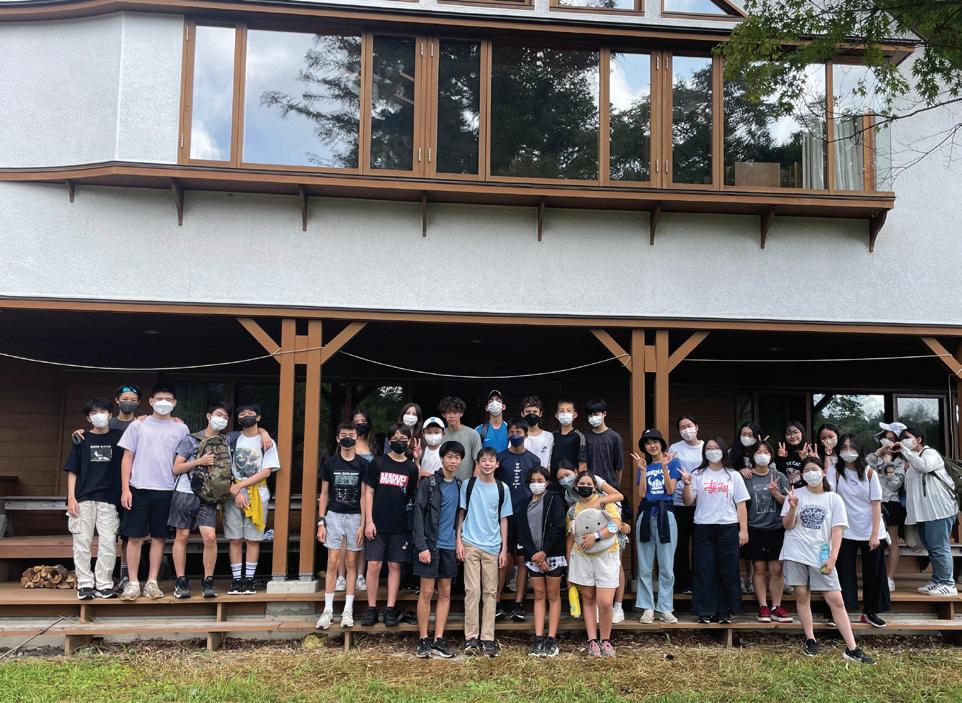
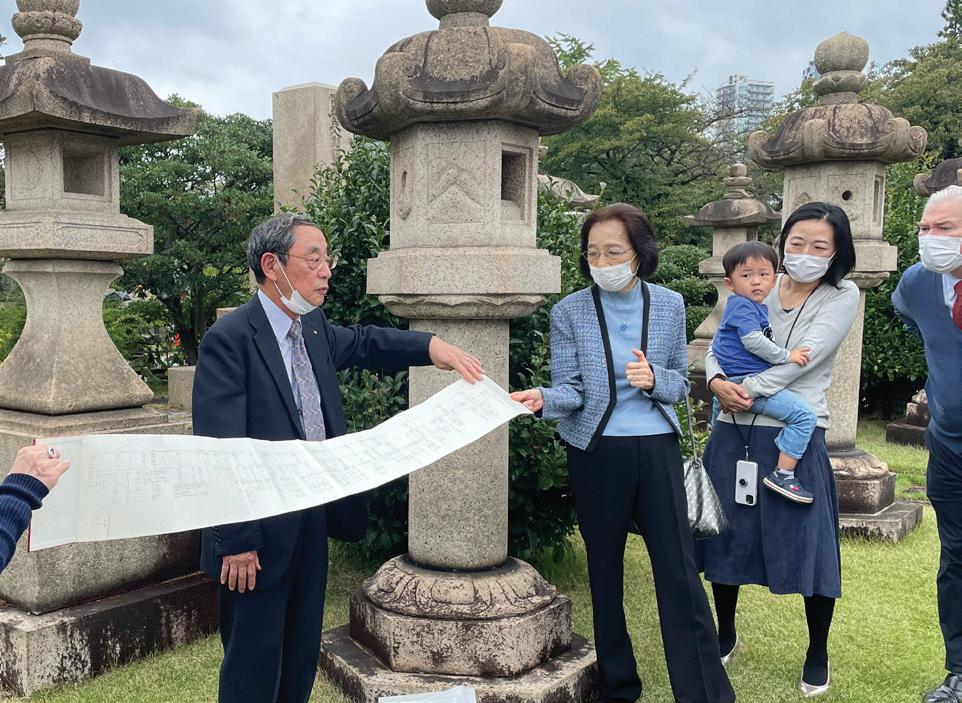
Puppet Adjacent Nishimachi alumnus Kennedy Kanagawa ‘00 makes his Broadway debut with a graceful touch of physical theater. .................................................................................................................................4 Matsukata House Museum Opening Two years of collaboration have culminated in the opening of a new and innovative museum space spotlighting the history of Nishimachi. ................................................................10 Kazuno: Learning Beyond the Classroom Read what it means to be back at Kazuno after COVID. ....................................................................................................14 Ancestral Connections: Nishimachi and the Matsukata Family Tree Learn why visiting the Matsukata family graveside is meaningful for current students. ...................................................16 Outreach Scholarship Program 20 Nishimachi-Kai 22 Faces from the Food Fair 24 Graduation 2022 - High Schools and Universities 26 Postmarks and Alumni Class Representatives 28 In Memoriam, Yokoso and Sayonara 34
The Internationalist Fall/Spring 2022-2023 Vol.69
In This Issue...
Puppet Adjacent
Nishimachi alumnus
Kennedy Kanagawa ‘00 makes his Broadway debut with a graceful touch of physical theater.
by Michael S. Strickland
Partnering with a Puppet
“Because the cow is held at a distance from me, it’s a weight that’s not centered within my body, so it becomes a strain after a while.”
Kennedy Kanagawa is explaining how, while relatively light at fifteen pounds, the puppet of the cow Milky White he maneuvers around the stage in his Broadway debut does get a bit heavy, especially with the energetic choreography and emotional liveliness he imparts to it for almost three hours every night as part of the recent revival of Into the Woods, Stephen Sondheim and James Lapine’s musical collage of European fairy tales.
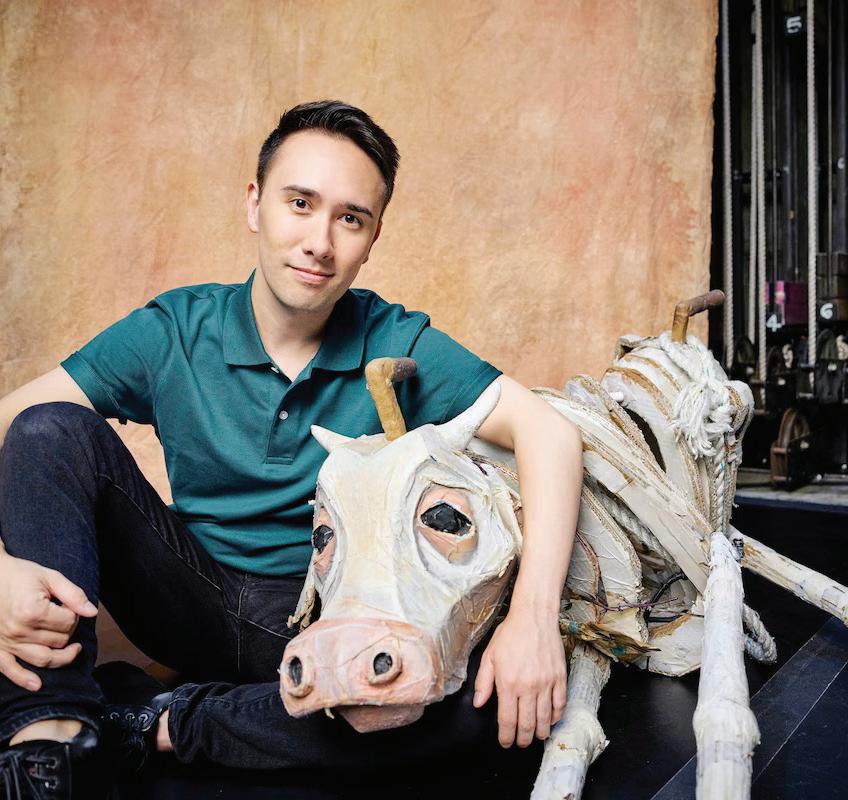
“So usually I have physical therapy first thing in the morning,” Kennedy continues, “and then go to rehearsal for a different show I’m helping to develop, and then I leave that a little early to make it to the evening performance of Into the Woods, and then I come home and pass out and do it all over again the next day.”
Into the Woods
One day, Jack, a poor peasant who will eventually get rich by stealing from the “giants in the sky,” is told by his mother to go “into the woods to sell the cow” he considers his “best friend in the whole world” — Milky White — since she has stopped giving milk, and, anyway, as his mother sings, “no one keeps a cow for a friend.”
Kennedy deftly expresses the vicissitudes of this friendship between man and cow by having the puppet gaze soulfully at Jack, who returns the affection by petting Milky White’s happy head and gazing into her epoxy-coated styrofoam eyes. In an ensemble sequence of the title song, Kennedy has Milky White crouch and shiver to share in the trepidation all the characters onstage feel about going “into the woods” to fulfill their various quests.
After Jack sells Milky White to the baker and his wife (who, for their own reasons, are seeking “a cow as white as milk”) for five beans, Kennedy
The Internationalist 4
Kennedy Kanagawa ‘00 with Milky White at the St. James Theatre. (Photo Credit: Jesse Dittmar for The Washington Post)
has the puppet (who hangs her head sadly and lies down, tearfully gazing after the departing Jack) buck up her spirits, gaze quizzically at her new companions and playfully cavort with them, adding a new dimension to their duet “It Takes Two.” And then there’s the prancing joy Milky White shows when reunited with Jack… Kennedy expresses all this and more with such dynamic verve and audience-delighting agility that it seems that the puppet created by James Ortiz must surely be lighter than a feather.
The heaviest part of Milky White, Kennedy clarifies, is the head, which has a handle he holds with his right hand. This handle is equipped with a lever to open and close the mouth. With his left hand he holds a handle on the rump of the cow. “She’s made of corrugated cardboard, and her legs are tied on with rope joints. She’s light enough to be usable, but it’s more the weight of the head on its own, which is the part I’m holding without the support of the legs, that makes it very physically taxing.”
Fast and Furious
Great artists have a gift for making the difficult seem easy; Kennedy is no exception, making his Broadway debut, at the age of 37, seem as effortless as he does his debut as a puppeteer.


Fall/Spring 2022-2023 Vol. 69 5
Broadway cast of Into the Woods, with Kennedy Kanagawa ‘00 on the far left as “Milky White”, the cow. Milky White usually appeared as an inanimate object, but Kennedy was asked to originate the cow character as a live actor, and has received accolades for his emotive, heartfelt interpretation. (Photo credit: Matthew Murphy and Evan Zimmerman)
Into the Woods won the Grammy for “Best Musical Theater Album” ! Original CD cast recording of Into the Woods released on Dec. 2, 2022.
Scheduled initially to run May 4–15, 2022, at New York City Center as part of its Encores! series, this production of Into the Woods, directed by Lear deBessonet and choreographed by Lorin Latarro, “was a very fast and furious process,” says Kennedy, “since it was only a two-week run, and ten days of rehearsal to mount the entire thing.” Ortiz, the show’s puppet designer and director, is a friend Kennedy “collaborated with on previous projects,” he explains. “We’ve done some stuff that was very physical theater, which kind of feels puppet adjacent. He messaged me, saying, ‘Are you free in May? You can probably do this, right?’ I replied, ‘I don’t know — we’ll see.’ I had never puppeteered before, so it was all a very fast learning curve.”
In a couple of days Kennedy and Ortiz figured out what the puppet was capable of. “It’s a unique puppet,” says Kennedy. “It’s not like a sock puppet or a marionette where there’s an established way of using it.” For instance, they tried different degrees of head-tilt and mouth-openings to figure out how to convey different emotions. They also learned how to use gravity to make her walk. “If we swing her head this way,” Kennedy explains, “her legs move forward, and then you can pull up her back legs and give her a walking cadence.”
Kennedy learned how to combine these movements and emotions and make Milky White dance. “I remember a specific instance in the opening number. The choreographer said, ‘All
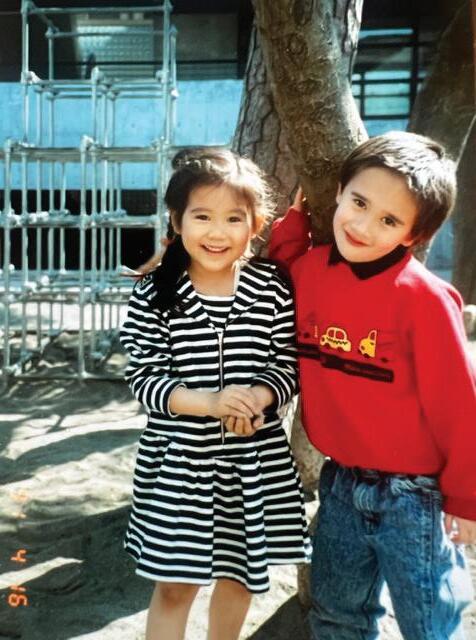
right, now, people, at this point you’re going to go, Step, step, chassé, and then do a three-step turn.’ I wondered, ‘How does a four-legged puppet of a cow chassé?’ But I figured out something, and looked off to the side where James was sitting, and he gave a thumbs up. So, yeah, it was a fast and furious process, but very fun.”
The fast furious fun did not end when the twoweek run at City Center ended, however; the show proved to be so popular that it soon transferred to the St. James Theatre on Broadway, where it was initially slated to run from July 10 through August 21, 2022 — but then was extended through mid-October — and extended again through January 8, 2023. “But that is our final extension,” says Kennedy. “Lin-Manuel Miranda’s new show is literally coming in to the theater the next day, so there’s no way we’d be able to extend after that.” (Lin-Manuel Miranda, by the way, is the creator, among other things, of the musical Hamilton.)
Beginnings
Kennedy’s path to his first Broadway show began long before he and James Ortiz started working together to bring a cow puppet to life on stage — and also involved putting himself into the mind and manner of another animal. “My very first theatrical experience was in third grade at Nishimachi,” Kennedy says. “I was in a play called How the Armadillo Came to Be, directed by Mr. Matz. I
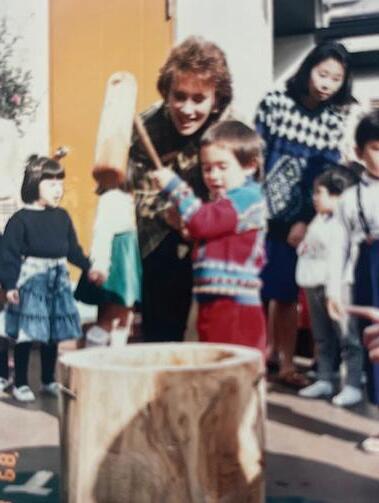
The Internationalist 6
Kennedy, with elementary school classmate, Mari Sekine, during their early years at Nishimachi.
Kennedy with his mother Diane Wiltshire during an Omochitsuki celebration at Nishimachi.
played the Jaguar, I think; that was very fun.”
Based on one of Rudyard Kipling’s Just So Stories, “The Beginning of the Armadillos,” How the Armadillo Came to Be tells how Stickly-Prickly Hedgehog and Slow-and-Solid Tortoise outwit the Jaguar by joining together to form a new animal, the Armadillo, in which their individual strengths are combined, their individual weaknesses overcome, so that they “will never ever be in danger again” — a symbiotic ideal which resonates strongly with Tané Matsukata’s vision of Nishimachi as a place of sharing and collaborative learning in a culture promoting uniqueness, diversity, and mutual respect combined with a guiding hope that the horrors of war will never again be repeated.
Although Kennedy attended Nishimachi from kindergarten through fourth grade, he admits to not quite remembering Miss. Matsukata’s philosophy of education. “But it must have been a good one,” he adds, “because I really felt that I was in good hands. I loved school at Nishimachi. It was such a wonderful place. I remember it as a very warm, safe, supportive environment.”
Fortunately, Kennedy found relief from the inschool trauma in both his family and in the form of after-school activities where his perceived differences were welcomed as strengths rather than spurned as oddities. “I started taking dance classes and voice lessons and acting classes,” he recalls. “I think, honestly, it was in part a tactic my mom was using to get me to stop hating being in America and just distract me with classes.” But by the time Kennedy entered middle school, “the bullying was really just out of control,” he says. “But that was also when I started to travel back and forth between Virginia and New York City.”
“I really felt that I was in good hands. I loved school at Nishimachi. It was such a wonderful place. I remember it as a very warm, safe, supportive environment.”
It was during his final year in this warm, safe, supportive environment that Kennedy got a chance to do his first musical, playing Rosie’s younger brother Chicken Soup in Maurice Sendak and Carole King’s Really Rosie. “The whole class took part,” Kennedy recalls. “Christopher Bjork, who was our fourth grade teacher, directed. I’ve pretty much been performing ever since.”
Muscling through Adolescence
In the summer before he entered fifth grade, Kennedy moved with his mother Diane Wiltshire, his younger brother Kane, and his step-sister Jessica, to the Washington D.C. area. The move was not an easy one for him. “At Nishimachi,” he recalls, “I was so fortunate to have had such a great education, with so much diversity and inclusion. I felt very close to and connected with all of the kids in my class. So coming to the States was just a whole different experience; it was so traumatic. People being judged negatively for any differences, for not conforming, was a brand new concept for me.”
In New York, Kennedy had landed his first professional role onstage as Jason in the National Asian-American Theater Company’s 1998 revival of Falsettoland, a musical by William Finn and James Lapine. He next performed in A Christmas Carol for two seasons at Madison Square Garden. As he was still a minor, Kennedy was always accompanied by his mother. “She would sublet an apartment in New York,” Kennedy explains, “and we would be there for however long the contract was for. So we did a lot of commuting and I basically did remote schooling with whatever school I was enrolled in at the time.” His very supportive brother and sister also enjoyed traveling with Kennedy on these trips.
When it was time to enter high school, Kennedy thought that perhaps he was missing out by not being socialized with his peers. “I went back into public school for the beginning of high school,” he recalls. “It turns out it was a mistake, because I got picked on very badly. My mother said, ‘Maybe it’s the school.’ So I transferred to a private high school. And that was slightly better. But then I got very sick my junior year — I was bedridden for most of it — and I ended up homeschooling again. Then, for senior year, the private school I was at didn’t take my credits. So I ended up going to a different private school. So, from fifth grade to twelfth grade I went to six different schools. It was very much kind of like muscling through adolescence to get to college because my parents kept saying, ‘Once you get to college, things will be a lot better, we promise.’ Thankfully that turned out to be true.”
Fall/Spring 2022-2023 Vol. 69 7
Better Things
Kennedy earned his bachelor of arts in theater from Muhlenberg College in Allentown, Pennsylvania, where his training extended beyond acting to incorporate both dance and singing. While there he performed in such standards as Tommy, Cabaret, and Jesus Christ Superstar, as well as more recent pieces such as Phyllis Nagy’s Weldon Rising and Zanna, Don’t!, a musical fairy tale by Tim Acito and Alexander Dinelaris.
Before going on to college, however, at age 15 Kennedy flew back to Tokyo for his class’s ninthgrade graduation at Nishimachi. “This was before social media,” Kennedy says, “so I hadn’t been able to keep in contact with all of my friends from Nishimachi as much as I would have wanted to. Seeing them again was really special. It felt so easy to slip back into that world.” Especially given the difficult process of adjusting and adapting that coming to the States had demanded of him.
Laughing, Kennedy explains the interesting, contradictory “struggle of othering and being othered across different cultures and countries that a lot of half-Asian people navigate to a degree. When I was at Nishimachi, other kids thought of me as the American kid, but then, when I moved to the States, I was considered the Japanese kid!”
Kennedy was born in Tokyo, and his father, Mike Kanagawa, was a businessman in New York for many years before returning to his native Japan, where he remains unwaveringly proud and supportive of Kennedy’s theatrical endeavors. His mother Diane is, as Kennedy says, “a white lady from Mississippi.” When Kennedy and his family
lived in Japan, they lived in Minami Azabu, a short walk from Nishimachi. When asked if Nishimachi’s culture of inclusion and diversity helped him better survive the social adversity he encountered after moving to the United States, Kennedy laughs and replies, “I don’t know if I was able to use any specific tools from Nishimachi to combat the toxicity of the American school system — but I sure did miss it.”
Fun Little Reunions

In November 2021, Kennedy played the role of Lo in the world premiere at the Utah Shakespeare Festival of Jason Ma’s Gold Mountain. “It’s such a beautiful piece,” Kennedy says of this musical that he chose over the role of Jack he was offered in a different revival of Into the Woods that was produced around the same time in Austin, Texas. “It was so special being a part of it. It’s about the Chinese immigrants who built the western section of the Transcontinental railroad and the horrible work conditions that they were placed in and the racism that they faced. It’s a really moving musical, and it had an all-Asian cast, except for one white actor who played the foreman, but everyone else was Asian. And the entire creative team was Asian, and that is such a rare experience within the theater industry in the States. Being a part of that, and telling this story which is so rooted in the Asian American experience was really powerful, and I’m so grateful that I was part of it. And it was just the most wonderful group of people.”
For instance, the writer and composer Jason Ma played the role of Marvin, father of the character played by Kennedy, in the 1998 production of

The Internationalist 8
Kennedy with his brother and friends at Sardi’s Restaurant in New York; on his left Kane Kanagawa ‘03 and on his right David Gow and Willie Morrison
Kennedy at the St. James Theatre (Photo Credit: Jesse Dittmar for The Washington Post)
Falsettoland, and the director of Gold Mountain, Alan Muraoka, also directed Falsettoland. And speaking of Falsettoland, Kennedy adds, “Ann Harada, who played my mother in that musical, and is a Japanese American actress, is in Into the Woods with me now. She’s playing Jack’s mother. So both of these shows have been fun little reunions of sorts.”
Celebrating Diversity
Before landing his Broadway debut, Kennedy spent fourteen years working as a restaurant server to support himself. During that time, he continued to audition and perform in theater productions and concerts. He recalls one audition in particular. “There’s a table of white men saying something like, ‘Oh, you’re not Asian enough to be in the Asian show, but you’re not white enough to be in the white show.’ That was a struggle, dealing with and figuring that out.”
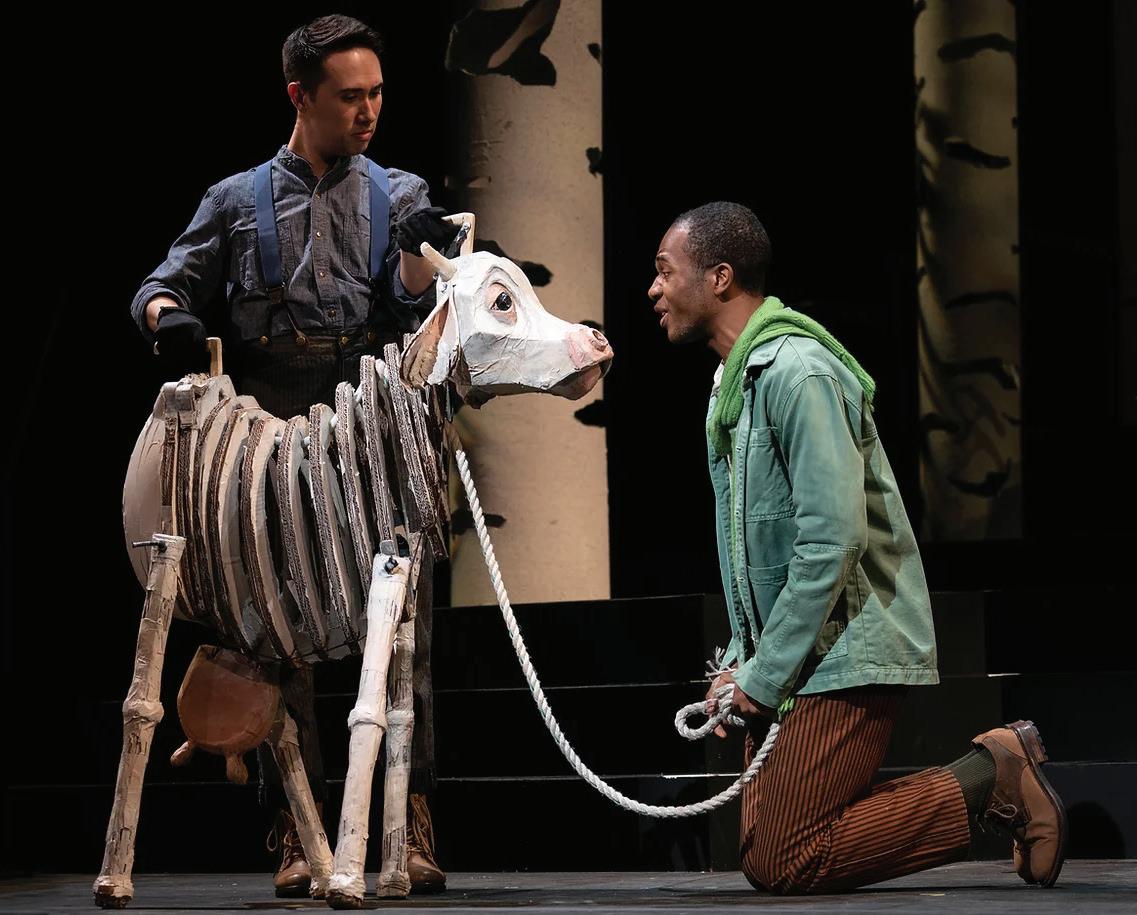
Kennedy almost gave up the struggle several times during those years, but he kept working hard and persevering, eventually making his Broadway dream come true by landing a role in a production that’s both technically innovative and socially progressive, putting paid to “certain problematic tropes,” as Kennedy calls them, that need never again be performed. By contrast, Kennedy explains, “The production of Into the Woods I’m in right now,” Kennedy explains, “is a poster child for how shows should be. It’s a really beautiful celebration of diversity onstage. I’ve had little kids come up to me after a show and say, ‘I’ve never seen anyone onstage that looked like me before. I think I want to do theater now!’ That’s been really rewarding.”
If you would like to find out more about Kennedy Kanagawa visit his website: https://www.kennedykanagawa.com
QR Code to a short feature on CBSmorning (September 3, 2022):


QR Code to a Washington Post Article (August 25, 2022)
https://intothewoodsbway.com/
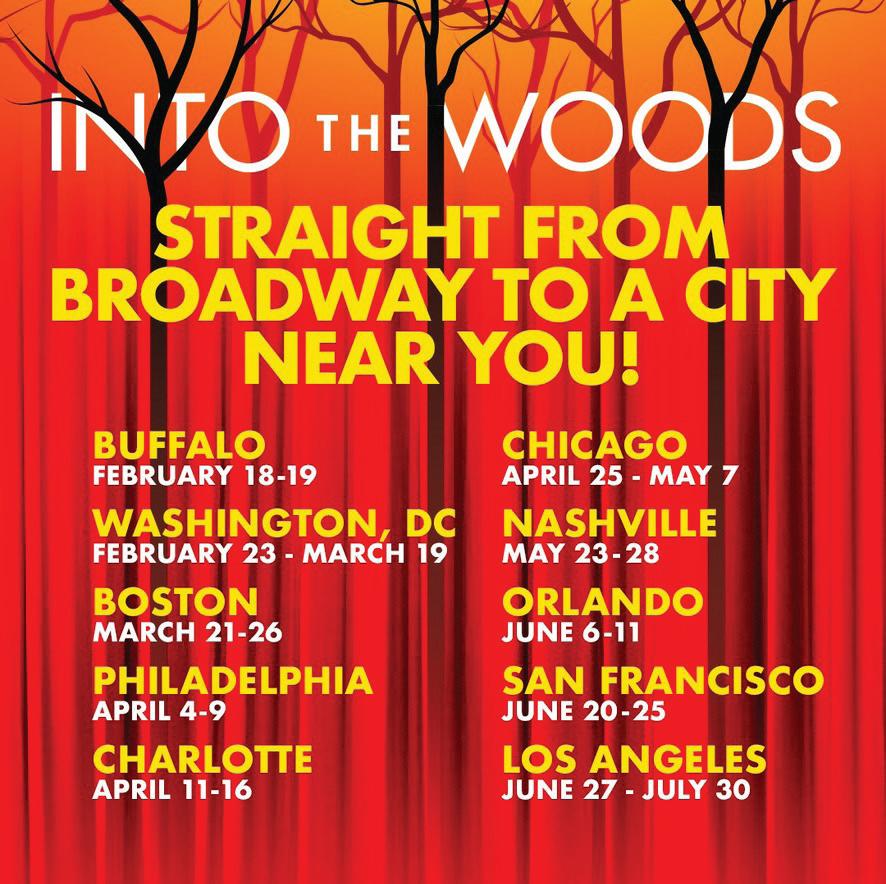

Fall/Spring 2022-2023 Vol. 69 9
Kennedy as Milky White with Cole Thompson on stage.
(Photo Credit: Joan Marcus)
Opening Night Broadway Debut! Kennedy on the red carpet outside the St. James Theatre
Recent announcement of “Into the Woods” National Tour: dates and locations.
(Photo Credits for this feature if not otherwise stated: Diane Wiltshire, mother of Kennedy Kanagawa)
Matsukata House Museum: A Big Idea in a Small Space
Mary Margaret Mallat, Director of Nishimachi’s Advancement Office revisits the moments and the people involved who guided the Matsukata House Museum to its soft opening in November 2022.
In the autumn of 2019, Nishimachi’s new Head of School, Karen O’Neill, was visiting another elementary school to meet her counterpart. She arrived early and while waiting ventured into a room adjacent to the lobby, where she discovered a small museum about the history and legacy of that school’s founder. Interested in history, she was immediately drawn to the artifacts and displays, which related to the school. Moving onto her meeting, Karen left the room intrigued and wondering: what would it take for Nishimachi to have a space that introduced students, parents, alumni, and visitors to our unique history and the visionary leadership of Tané Matsukata?

Fast forward to the present day, and the answers to what it would take are in. Thanks in large part to the generosity of our school community, the Matsukata House Museum opened in November, 2022. Located adjacent to the reception area in the newly refurbished first floor of the Matsukata House, the space is fast becoming a favorite for students, teachers and alumni, and serving the purpose that had inspired its initial creation.
How did this happen so quickly? Let’s step back to the school’s 70th anniversary and the launch of the Matsukata House 100th Anniversary fundraising campaign. In February, 2020, the Board
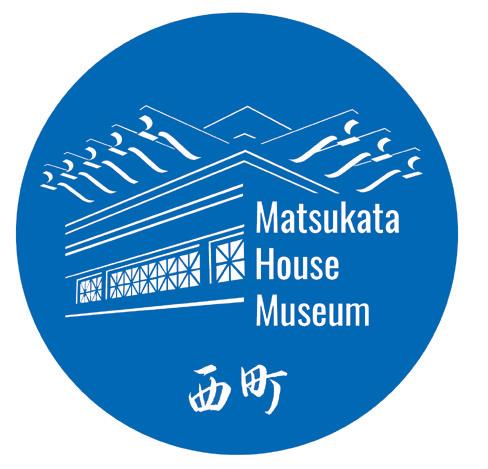
The Internationalist 10
The musuem room after renovation (Photo Credit: Toshiharu Kitajima)
A detail of the canopy roof was chosen for the newly developed logo of the MHM, as it is both, significant in its historic value, as well as the most familar feature of the Matsukata House to the whole community - a favorite backdrop for the many pictures taken over it’s 100+ year history.
Design
Koa Kellenberger ‘16 and Martina Schaefer
of Directors and the Head of School, kicked off a capital campaign aimed at the preservation and restoration of the Matsukata House, the school’s iconic building. Working closely with Philippe Eymard and Matt McKinney, from Nishimachi’s Advancement Office, the campaign surpassed its original fundraising goals, thanks to the response of current parents and the alumni community. With the availability of additional funds, the retrofit of the exterior of the building expanded to the repurposing of interior spaces on the first floor.
Collaborating with architects Reiko Tomuro and Kenichi Nakamura, who had led previous Nishimachi projects, including the seismic retrofit of the Matsukata House and the building of the Yashiro Media Center, a working group began to consider how a small, underutilized space on the first floor, known as “the parlor”, could be repurposed to be an experience center about Nishimachi’s history.
Matt Marson, Nishimachi’s Director of Learning and Innovation, began exploring how digital tools could enhance the learning experience at a Matsukata House Museum. Alongside the architects, Matt visited local Tokyo museums to see how digital platforms could provide new possibilities for storytelling and engagement. With these ideas in mind, a space was designed to include a large screen, sound showers, and iPads, providing visitors with an immersive and interactive experience related to the rich history of Nishimachi and its founder, Tané Matsukata.
However, a museum space without artifacts is just an empty shell, and it fell to Nishimachi’s Advancement Office to collect and curate the content for the museum’s exhibits. Fortunately, the Advancement Office had saved copies of documents, publications, videos and photos, showcasing many important events in the school’s history. Philippe Eymard and former alumni officer Hiroko Lockheimer had created photo displays on the second floor of the Matsukata House, and maintained cabinets of documents, photos and publications, but how would we move all of these from hard copy to digital and make them available for an experience on the screen?

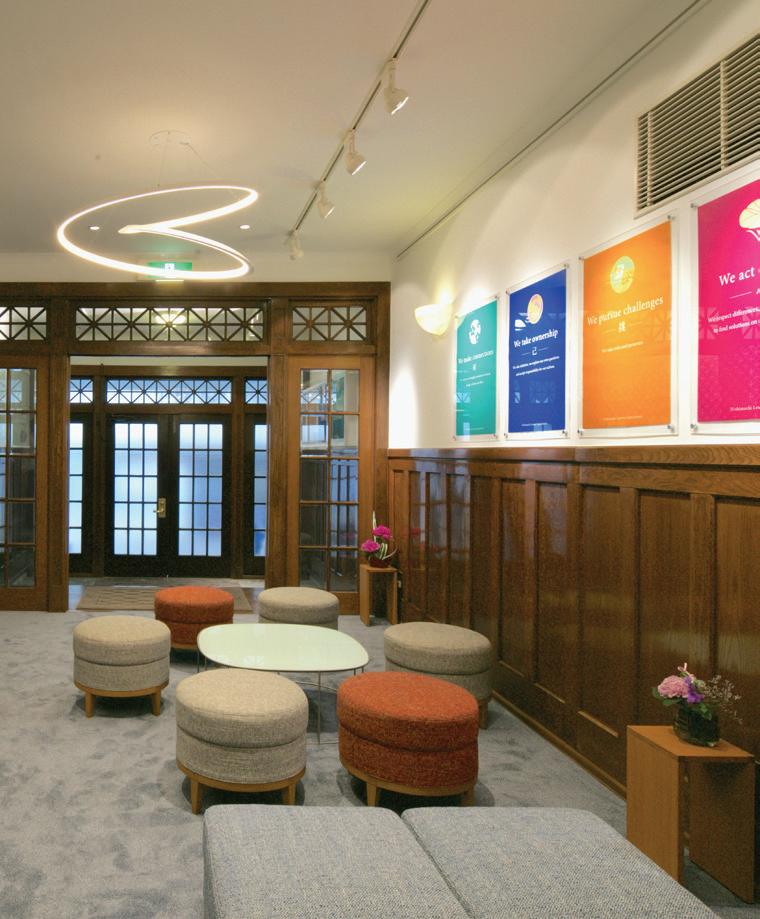
At this juncture, the alumni association (Nishimachi-Kai) agreed to cover the cost of digitizing the yearbooks, dating back to the first Ayumi in 1964. With one digital project underway, Nishimachi began looking for a curator, to design an experience that would tell our story. Community member and current parent, Martina Schaefer, brought her architectural background, university teaching experience, and knowledge of design and digital technology, to the museum project, as its first part-time curator.
Working closely with the museum team, Martina set out to create a structure for the contents. Digitizing and building the archives as fast as possible, with the help of interns and alumni, Koa Kellenberger ‘19, the work was underway. Partnering with our software experts in Australia (Habitat, Inc)
Fall/Spring 2022-2023 Vol. 69 11
The Matsukata House lobby after renovation (Photo Credit: Toshiharu Kitajima)
Matsukata House Museum opening, November 2022
spreadsheets of photos, interviews, artifacts, and publications would soon turn into experiences selected on the screen by our visitors.



As the search continued for artifacts, Martina and Mayumi Nakayama ‘90, Nishimachi’s alumni officer, discovered the original building plans for the Matsukata House, revealing that the space planned for the museum had originally been designated as “the Living Room” according to American architect, William M. Vories, who designed the house in 1921.
Original source materials often take us back to the intentions of those who have long since passed, and this discovery did the same for our museum project. Taking inspiration from his plans, the space we were creating could harken back to the original family living room. The museum is
now curated to welcome visitors, old and new, into our Matsukata House “Living Room”, where new acquaintances are made, friends are reunited, family comes to celebrate and memories are shared as stories are told.
In November, 2022, donors and trustees experienced the opening of the museum. The space worked as we had hoped; connections were made as adults experienced the school from a new vantage point, but perhaps the greatest success has been the recent visit of Grade 5 students, who in their Japanese class, are studying the history of the school. When laying out the structure for the museum, it was always an aspiration that it would act as a great learning space for our current students, hence it was wonderful to see their exploration of Nishimachi take on an entirely new dimension.

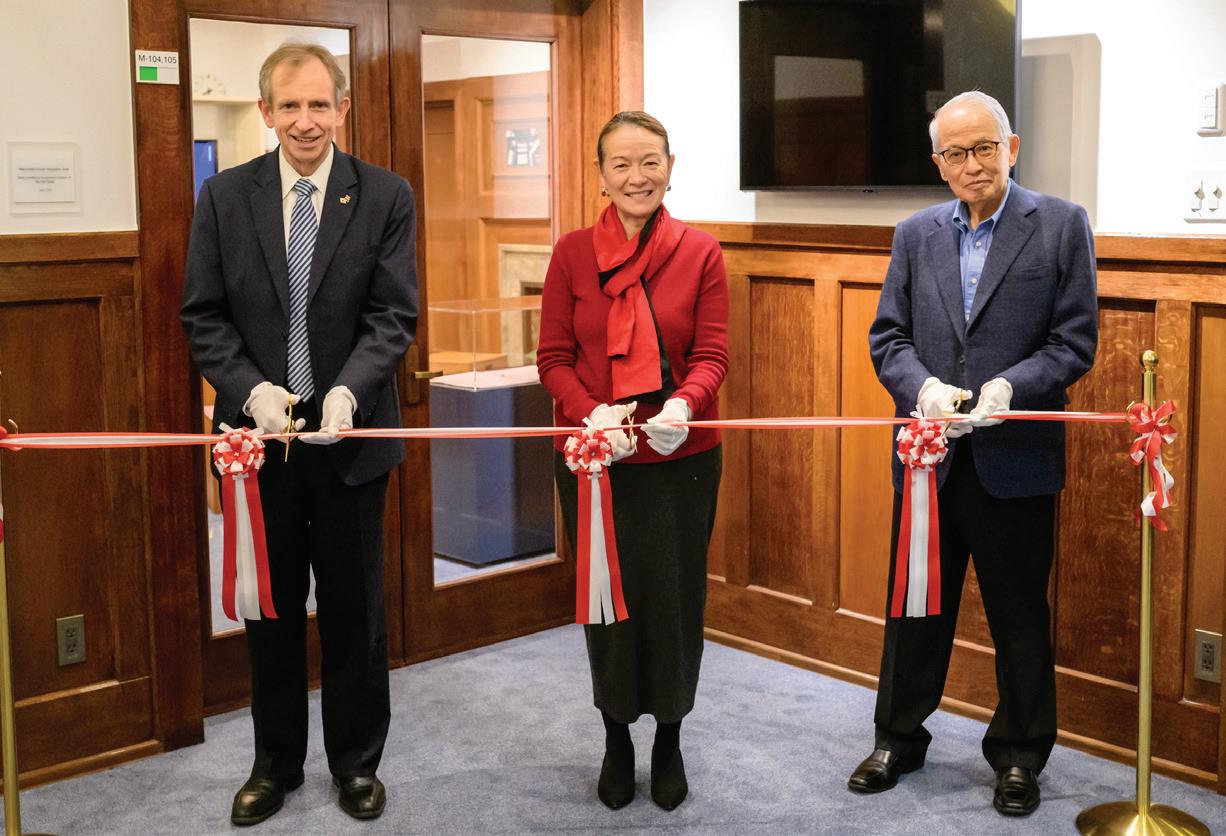
The Internationalist 12
Grade 5 students explore the museum as part of their Japanese language unit on school history, taught by Maeda-sensei, February 2023.
Board Chair Philip Greenan, Head of School Karen O’Neill ‘78, and former Trustee and Director Masamoto Yashiro during the Ribbon Cutting Ceremony for the Opening of the Matsukata House Museum, November 2022





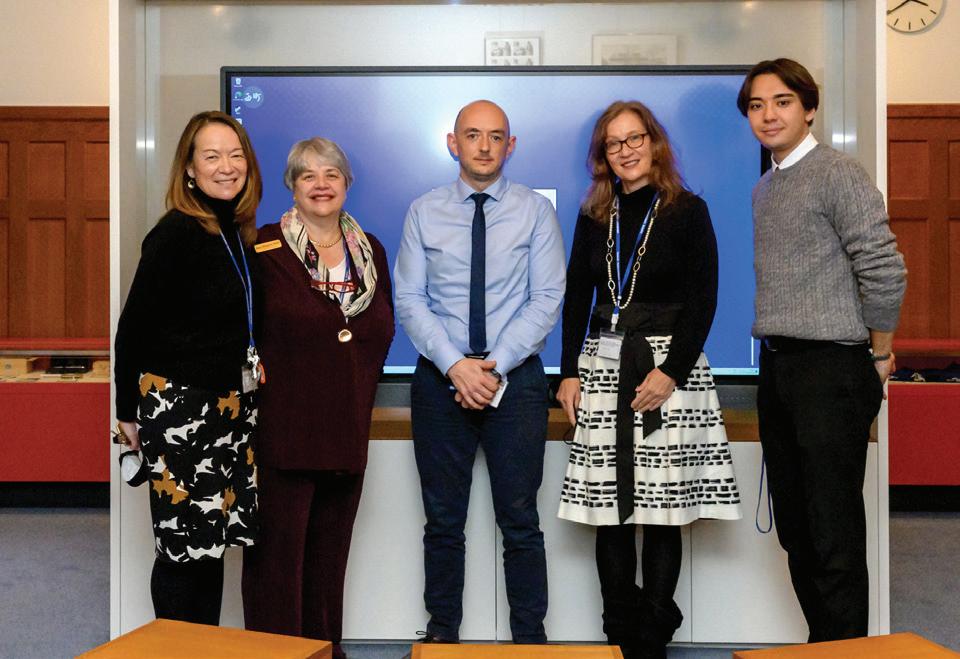
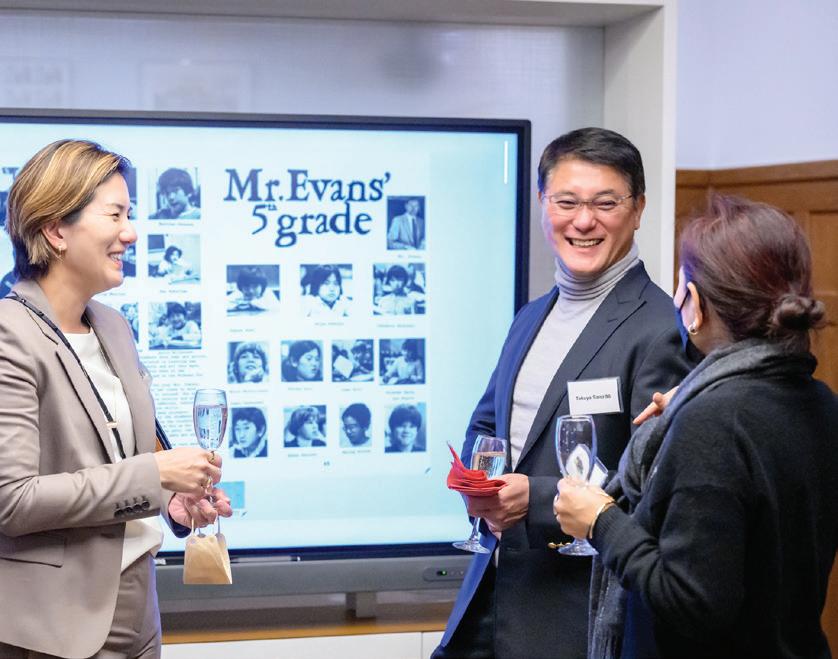
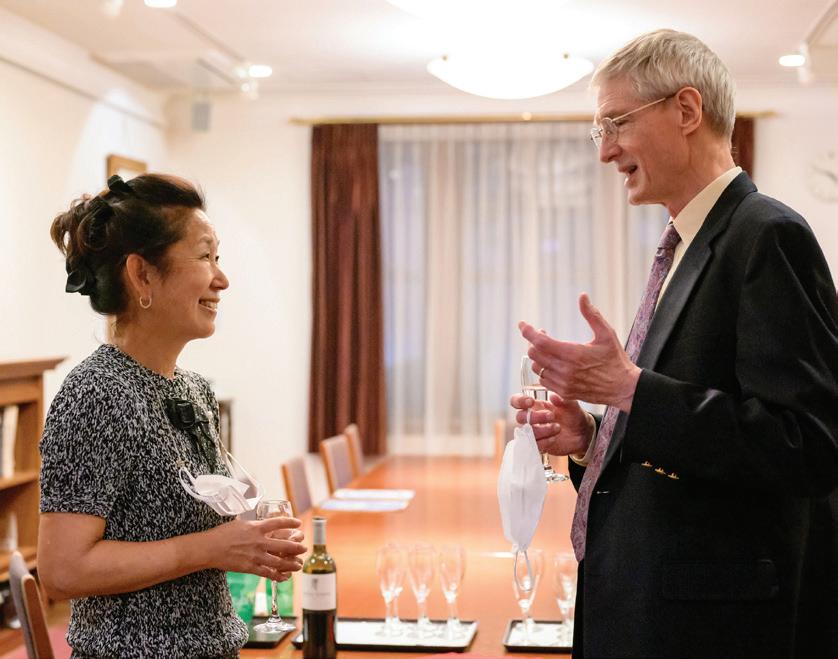

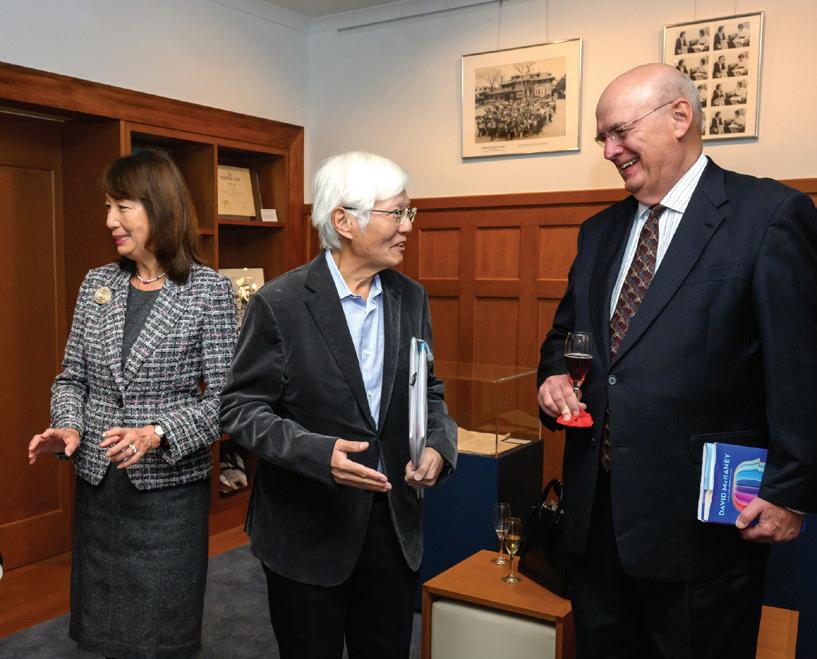
Fall/Spring 2022-2023 Vol. 69 13
The Matsukata House Museum Team
Trustee Meeting November 2022 with an initial visit to the Matsukata House Museum
Donor Reception, November 2022
Kazuno: Learning Beyond the Classroom
Generations of Nishimachi students have traveled to Kazuno, in Gunma prefecture, for exploration and experiences outside of the classroom. Exploring the rich agricultural and natural offerings of this region affords students access to challenging outdoor activities and many group events. Kazuno and the connections with fellow students, both at Nishimachi and at Kurohone School, is a traditional Nishimachi activity that is shared by alumni across the decades.

This fall, grade 8 students were able to resume this annual event which had been postponed in recent years due to COVID. Here are the reflections of Melanika S. and Lila W., as they answered questions for The Internationalist.
What did you enjoy about visiting Kazuno?
We enjoyed preparing food for ourselves. We were broken into 4 advisory groups and we were allowed to decide what we would have for dinner and breakfast. Each Advisory group chose what we were going to eat. Our advisor, Kajita-sensei’s advisory, decided to prepare the second day’s breakfast: miso soup and many kinds of rice balls. At 6:00 am on the second day, Kajita-sensei’s advisory got together and started cooking. It took us about an hour to finish cooking. Although not everyone liked the food we prepared, it was a good experience.
Did you challenge yourself to try a new activity while at Kazuno and what was your experience like?
It was challenging when we went to the river. On the way there, the path was very muddy and slippery. It didn’t look like we were supposed to walk there. Most people were wearing sandals and it was very hard to walk there.
The Internationalist 14
Grade 8 students pose for a class photo on their last day at Kazuno, September 2022.
What does it mean to Nishimachi to have this unique property at Kazuno?
Once in a while students are led to a Nishimachi tradition which has been an event for this school for the longest time. During the years of school, we participate in field trips, playing many activities, and helping with communication and growing stronger bonds as a grade, to which Kazuno is one of them.


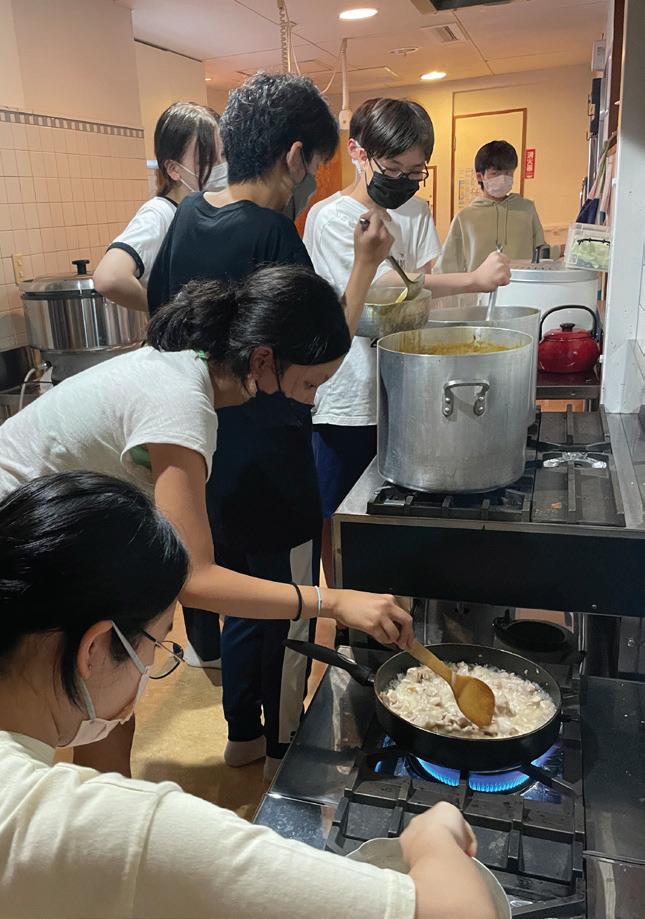


How would you describe “learning without walls”? Would you recommend this type of experience for other students?
It was very well planned out as we haven’t been back due to COVID so it was really nostalgic. One of the main parts about Kazuno is when the whole grade bunches up for a campfire and s’mores and we all just end up telling stories. It’s not healthy to stay in closed classrooms watching computer screens all day. I wish we had more days to spend at Kazuno.
Overall, Kazuno never fails to surprise me with the memorable time we spent with each other, and I
hope, looking back at Nishimachi, that Kazuno will last as long as Nishimachi continues.
If you had not been to Kazuno before, what surprised you about this location?
Surprisingly, it wasn’t as far as it all sounds. The bus is filled with roar and energy which is too much fun to miss out on. We do stop by a rest stop halfway through, where students are allowed to leave the bus on condition to return after a set amount of time. The building is located up a hill with lots of trees surrounding it. It’s quite separated from all the other houses but that’s what makes it special. Night is especially peaceful and the amount of bugs you hear are insane.
There is a natural river nearby. Even though it’s not the time of season for swimming in the freezing water, the exploration of the river and the exhaustion at the end is definitely worth it. It really bothers me how many people had to miss this because of COVID. This isn’t just for students to enjoy, but for teachers too. If we were given another chance for this trip, everyone would be on board with it.
Fall/Spring 2022-2023 Vol. 69 15
Exploring the river at Kazuno
Meal preparation for over 40 hungry people
Campfire and S’mores
Ancestral Connections: Nishimachi and the Matsukata Family Tree
Grade 9 students visit Aoyama Cemetery and meet with a member of the Matsukata Family.

The first visit by Grade 9 students to Aoyama Cemetery to pay respects at Miss Taneko (Tané) Matsukata’s grave and the graves of the Matsukata family took place on October 11, 2021. The purpose of this visit was not only to extend student knowledge and understanding of our school’s heritage, our founder, and her family, but also to provide a personal and long-lasting connection to the school for grade 9 students, who would shortly become alumni of Nishimachi International School themselves.
Following the success of this first visit, Head of School,Karen O’Neill, introduced the Grade 9 advisors to Mr. Shichirō and Mrs. Yukiko Matsukata, who currently
oversee the Matsukata family history and the family o-haka (grave) in Aoyama Cemetery. They were kind enough to meet our students at the o-haka and Mr. Matsukata told them about the family members buried there, and introduced a few fascinating stories about the contributions the Matsukata family has made to modernizing Japan.
We hope that these annual visits will continue to provide future Grade 9 students with invaluable lessons in the history of our school and the modernization of Japan.
Andrew R. Deane and Hiromi Narita Nishimachi Faculty, Grade 9 Advisory
The Internationalist 16
今回のお墓参りについて生徒達の振り 返りをまとめました。お読みいただけ れば幸いです。
Mr. Shichirō and Mrs.Yukiko Matsukata with grade 9 students, their teachers, and Head of School, Karen O’Neill ‘78
Harry
青山霊園へのトリップは新鮮その物だった。僕 は韓国ではよくお墓を訪れる機会があったのだ が、日本に来てからは行けなくなり、お墓に行 くことは滅多に無くなった。青山霊園というお 墓に行くのはほぼ四年ぶりであった。昔から友 達に青山霊園に行くことを勧められたが、実際 行ってみたら友達が勧めていた理由がわかっ
た。青山霊園はその場所全体になんか神秘的な 雰囲気が漂っていた。松方家の墓はとても大き
くてカッコよかった。日本の社会、特に日本銀 行への大きな貢献を考慮すると、あれくらい
立派な墓は当然な物だと思った。松方さんが親 切な説明をしてくださったおかげで十月十四日 青山霊園へのトリップはいい思い出として残っ
た。松方家の家系図や伝統、そして歴史を知る ことができてとても良かった。他の墓にも訪れ てみたが、全ての墓が全部違った個性を持って いた。質素なものから豪華なものまで、様々な 墓があったのでとても興味深かった。青山霊園 を個人的にも訪れてみようと思う。
I was excited to burn incense and put flowers on the grave of Miss Tané Matsukata. I respect her so much and I can’t believe how lucky I am to be in a school with a special background and a founder with such an interesting history. I hope all students appreciate what Miss Matukata has done to make Nishimachi such a special place. I bet she would be very proud to see how her school has grown to be one of the top schools in Tokyo.


Ryota
Miss Tané Matsukata, the granddaughter of the former Prime Minister Masayoshi Matsukata, used her fortune and education abroad to give both English and Japanese curriculums to students in Tokyo. Being able to learn about her heritage from her cousin was an honor. I never knew about the strong interfamily bonds within the entire Matsukata family, for which I have much respect, as my own family does not have such a strong connection.
Fall/Spring 2022-2023 Vol. 69 17
Luna
Mr. Shichirō and Mrs.Yukiko Matsukata, and Karen O’Neill ‘78
Mr. Matsukata showing the Matsukata Family Tree Scroll to grade 9 students
Anna
先日は貴重なお話を聞くことができ、とても よかったです。JSSの授業で松方家の歴史につ いて触れることはありましたが、「表面的」
な話のみで、今まではあまり深くは掘り下げ られませんでした。ですが今回は、松方家の価 値観、兄弟間や他の政治家との関係性について 聞けて、非常に興味深かったです。お話を聞く 前までは、「西町の創設者はすごい人なんだな ぁ」という、少しやんわりとした認識でした。
その後、松方家や種子さんがどのような環境で 育ち、どのような想いで西町を作ったのかを知
り、西町の見方が一気に変わりました。西町の 教育方針や価値観が松方家の歴史や種子さんの 育った環境に強く影響されていることが本当に よくわかります。西町の歴史について気になる ことがいくつかあり、インターネットで調べて みたことがあるのですが、やはり表面的な話ば かりで、私の疑問に答えてくれるものはあまり ありませんでした。ですが、今回は松方家の方 から直接話をしてもらうことができ、今まであ った疑問が晴れ、本当に良い経験ができたと思 います。
Yui
We were able to hear about how Prime Minister Masayoshi Matsukata, Miss Matsukata’s grandfather, affected Japanese society during the Meiji Period, and it was interesting to see the family tree of the Matsukata family. I was surprised to see that there were so many people in one family, and that the family members were separated by alphanumeric codes!

Mica
I’ve heard about extended families from friends who have a lot of cousins, but I have never come across a family with such a great history that was taught down the generations. I found it stunning that the Matsukata family members still have connections with each other. I was wondering how it was possible for the Matsukata family to have connections with each other when there were literally so many of them! I was surprised that the Matsukata family members still maintain these connections by hosting events such as 子供運動会 (children’s sports day).
Matthew
It was a very good experience to meet Mr. and Mrs. Matsukata. I was fascinated to learn about the Matsuka family and the long history of this family. I never knew that such big families existed, and when I saw the family tree I was surprised by the number of people and all the branches of the family. It was also good knowing where Miss Tané Matsukata is buried. It helps me appreciate our school more.
The talk by Mr. Matsukata about Prime Minister Masayoshi Matsukata and our school’s founder, Miss Tané Matsukata, helped me understand how special our school is and what an extraordinary woman our founder was. In the story about Prime Minister

The Internationalist 18
Reina
Masayoshi Matsukata, I was surprised because he seemed to be a very hard worker. The episode when some people attacked a row of the Daimyo’s soldiers, and Matsukata-san helped, suggested how he found his first step to success in later years.
Ami
Visiting the Matsukata family grave and listening to the history of the Matsukata family was a very valuable time. When Mr. Shichirō Matsukata was talking about his family, I learned a lot of things I didn’t know about Prime Minister Masayoshi Matsukata. I was fascinated to learn that Masayoshi Matsukata was a samurai in Kagoshima. Also, it is very cool how big the family is and how many of Masayoshi Matsukata’s children were involved in the Bank of Japan. Listening to the presentation, I realized how trusted Masayoshi Matsukata was.
Ema
I learned many things that I did not know about the Matsukata family. For example, I did not know that Prime Minister Masayoshi Matsukata had more than 23 children and Miss Tané Matsukata was only one of many more grandchildren he had. It was interesting to know that everyone had their own “thing” when it comes to jobs. It was also fascinating to learn that Masayoshi Matsukata had so many accomplishments such as making the bank and becoming the prime minister.
Lena
I started Nishimachi this year and didn’t know a lot about the Matsukata family and their history. Listening to Mr. Matsukata talk allowed me to have a better understanding of their history. It was an amazing experience looking at all the different sizes of the graves and their histories. Seeing the family tree as a long folding book had me in shock at how extensive the family is and what each of the members did during the Meiji Period.
Tamaki
Before visiting the Matsukata grave I wasn’t very familiar with the Matsukata family, so it was a great experience to learn about our school’s founder and her family from Mr. Shichirō Matsukata. It was very interesting how there were four graves in total and it was my first time seeing a tomb that big. Also the 家系図 (family tree) that Mr. Matsukata showed us was really fascinating. It was my first time seeing a 家系図 as my family doesn’t have one, and even if I had seen a 家系図 before, I had never seen a family so extensive! I wonder if every Matsukata family member has his or her own copy of the family tree book. The family tree book will need to keep growing and growing as each branch family adds babies to the family!

Fall/Spring 2022-2023 Vol. 69 19
Outreach Scholarship Program

18th Annual Outreach Golf Tournament

Last May, 30 Nishimachi golfers enjoyed a beautiful day at the 18th Annual Outreach Scholarship Golf Tournament. The event took place at the Kanagawa Golf Club in Sagamihara-shi, a picturesque new location for the tournament. After being postposed due to COVID-19, it was a particularly special occasion for everyone to come together and play golf again.


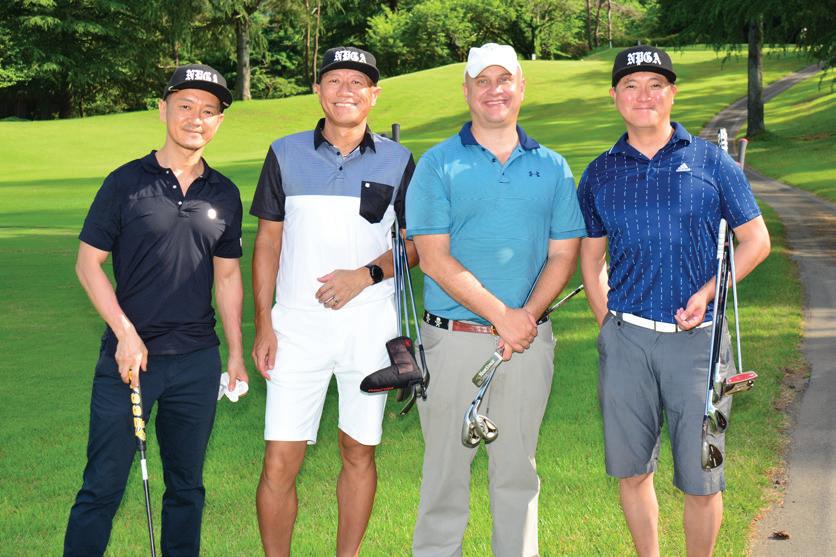
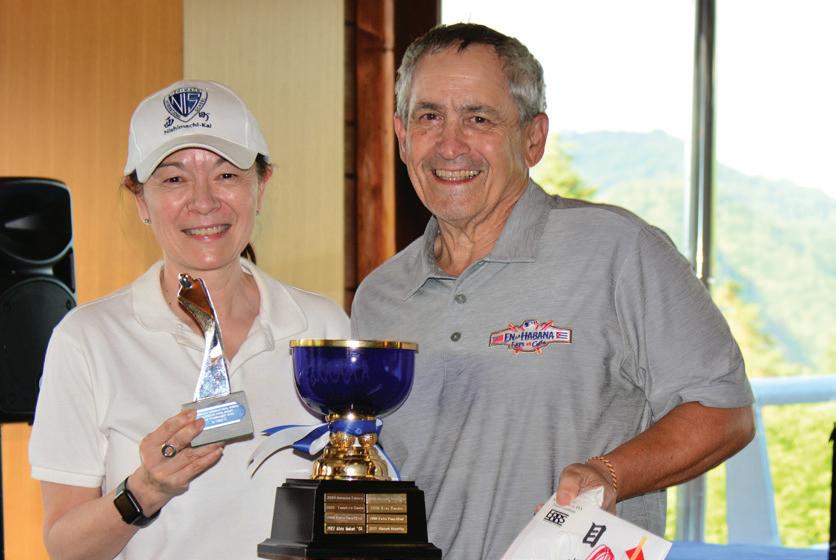
The tournament was a diverse gathering of the Nishimachi community, with golfers from the Board of Directors and Trustees, alumni, faculty/staff, alumni parents, and current Nishimachi students. The event was open to both novice and experienced players, provided young students with a unique golf course experience.
Jerry Rosenberg (AP ‘95, ‘97, ‘05), an alumni parent and grandparent with a long association with Nishimachi, and his granddaughter Sophie L.both took top prizes in their division. Sophie, a 7th grader at the time, was awarded best woman golfer and the “closest to the pin” prize. Congratulations to this pair for their outstanding performance!
Thanks to the generous in-kind donations from the Nishimachi community, prizes were awarded to all participants, and the Outreach Scholarship Program received ¥850,000 in donations. These funds will support students and families who benefit from scholarships at Nishimachi, enabling them to receive an international school education.

The Internationalist 20
Tournament Winner Jerry Rosenberg with Karen O’Neill
Jerry Rosenberg, Sophie L. and Christopher Nelson
Shigenori Oshiro, Tetsuo Hayashi, Andy Hill ‘86 and Tokuya Sano ‘86
Women’s Division Winner Sophie L.
Tournament Founder Philippe Eymard
Eugene T. and Kenro Tsutsumi
Outreach Scholarship Program
Outreach Walkathon 2022
Nishimachi’s Outreach Scholarship Program continues its great initiative to support diversity in our school and provide opportunities for families who might otherwise be unable to access an international education. It’s inspiring to see that Nishimachi has been working since 2003, when the Outreach Program was started, to make our school more accessible to a diverse group of students and families.
The Walkathon attracted one of the largest crowds in its decade long history, and all enjoyed the beautiful weather at Meiji Jingu Gaien in Shibuyaku. The ginkgo trees were in full color as the more than 400 walkers circled the 1.325 km loop. This kind of fundraising event is a wonderful way to bring people together and build community while also contributing to a good cause. Our 10th Walkathon was a grand success!
Education is such an important investment in the future, and it’s wonderful to see the Nishimachi community and the Outreach Scholarship Program working to make it more accessible to everyone. We are looking forward to next year’s Walkathon and hope to see you there in November 2023.



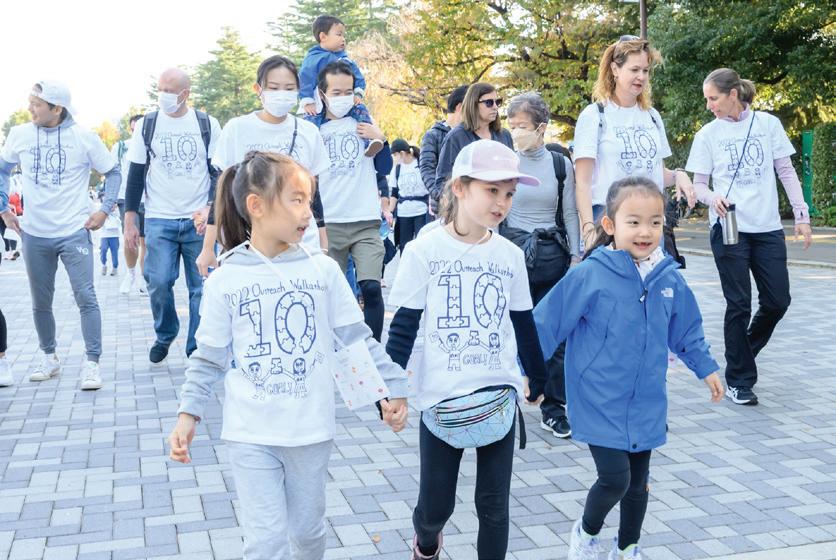

Fall/Spring 2022-2023 Vol. 69 21
Nishimachi-Kai

We Make Connections as Celebrations Return!
Nishimachi-Kai is pleased to have hosted and/or participated in two major events which are long standing traditions in our community, the June BBQ and Food Fair. At each event, we were able to meet in-person and it was wonderful to be together again, after a long time apart.
Food Fair 2022 was a huge success, with many visitors from our Nishimachi-Kai community coming together to sample delicious foods and drinks from all over the world and enjoy the festive atmosphere. Again this year, we ran the Nishimachi-Kai Café, which was a great spot for folks to gather. Many alumni came by to share a drink and chat, while purchasing treats and Nishimachi-Kai gear. Thanks to those who provided in-kind donations and to Cheerio Corporation who generously donated soft drinks once again.
Looking back to June, 2022, the BBQ returned after our COVID shut-down and photos are shared here. With some food safety restrictions, we opted for bento lunches, which everyone enjoyed.
For 2023, we will host the BBQ again and hope to see you all there. Mark your calendars and SAVE THE DATE on June 17, 2023. Please join us and make it another great alumni gathering. Watch the Nishimachi-Kai newsletter in the coming months for more information on how to help us.

It is Nishimachi-Kai’s mission to perpetuate our founder, Tané Matsukata’s, vision for the school and to provide an opportunity for alumni to reconnect and engage with the Nishimachi International School community. To share your ideas on how we can grow our success in this mission, please contact us at nishimachi-kai@nishimachi. ac.jp. We are here to receive your suggestions.
If you are interested in visiting Nishimachi, the Alumni Office can assist you in making that possible.
Please contact them at alumni@nishimachi.ac.jp

The Internationalist 22
From Left: Eisuke Nakajima ‘99 - Secretary, Ryoji Kubo ‘90 -Chair, Lalaka (Ogawa) Fukuma ‘90 - Vice Chair, Yhu Kuni ‘94 - Treasurer (not shown)
Ryoji Kubo ‘90 and Karen O’Neill ‘78



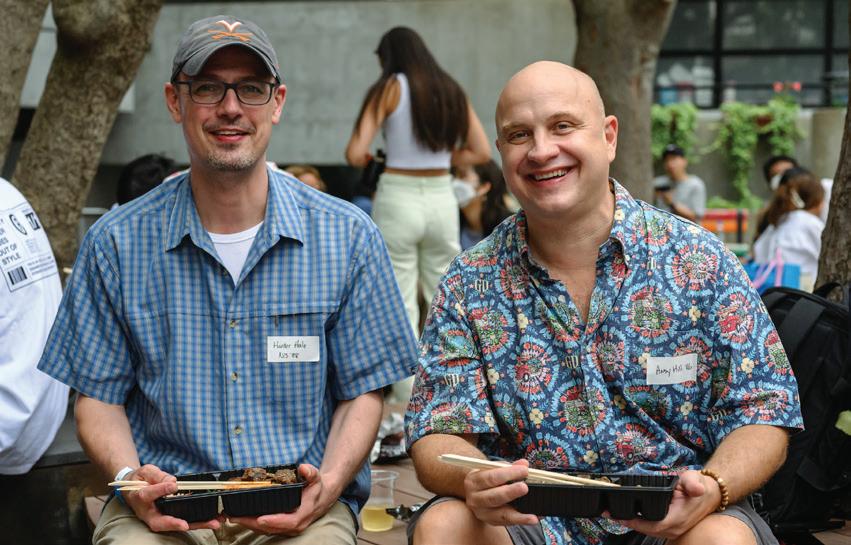
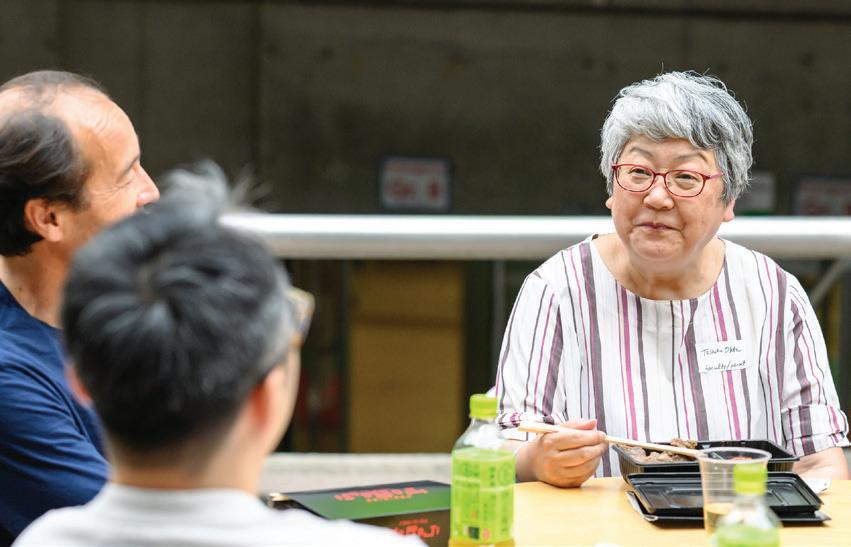


Fall/Spring 2022-2023 Vol. 69 23
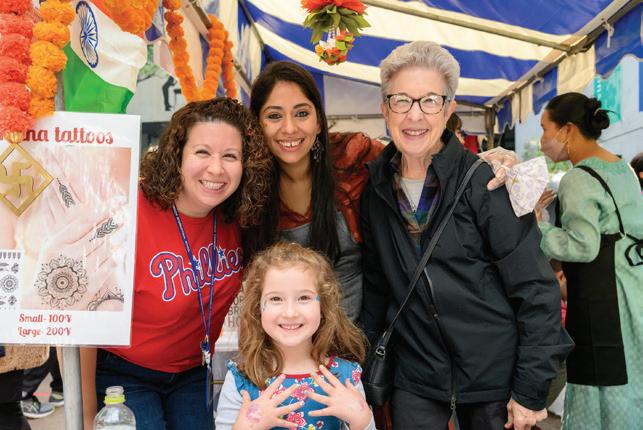







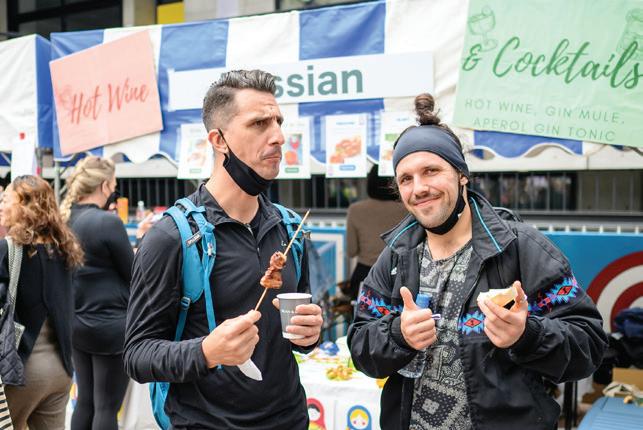
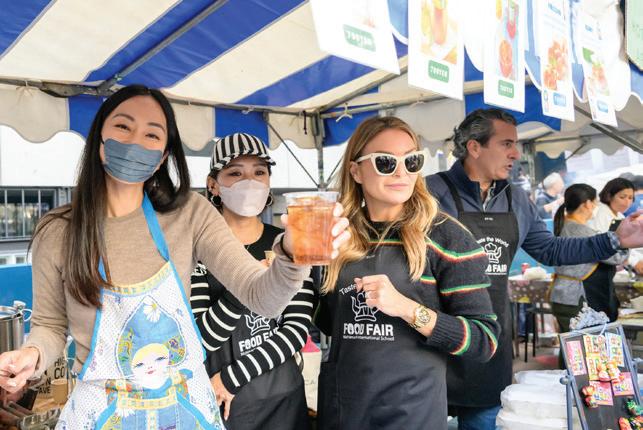
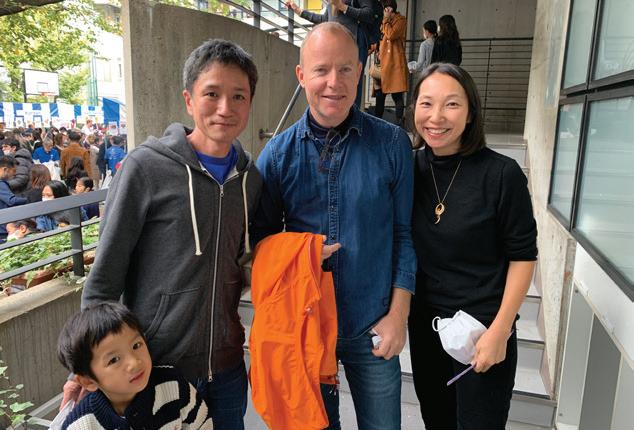


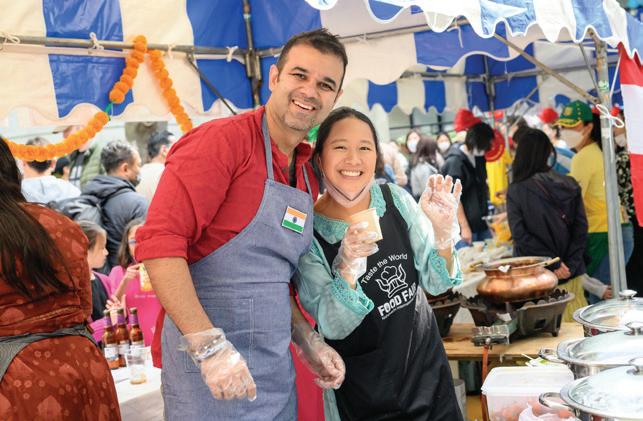

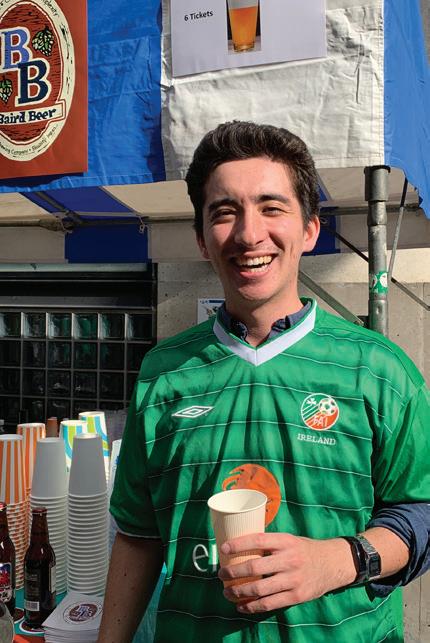

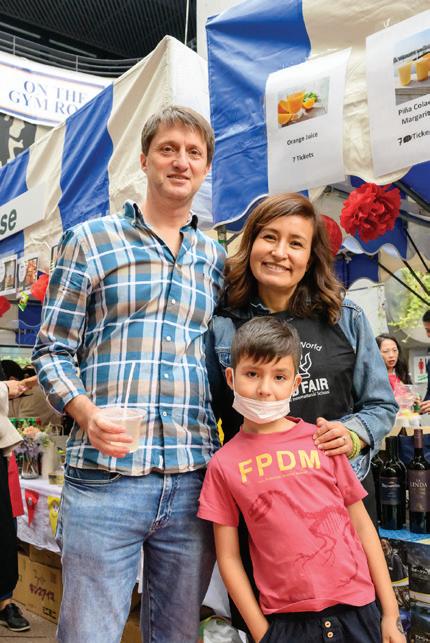

The Internationalist 24
FACES from FOOD FAIR 2022



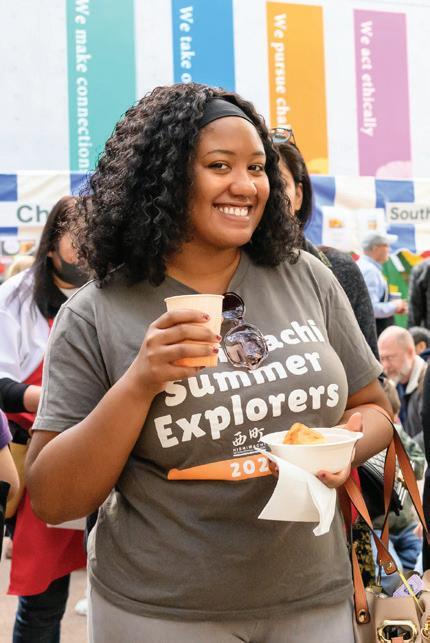



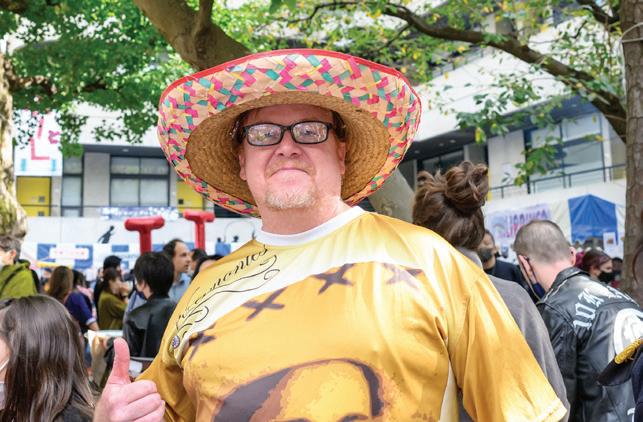
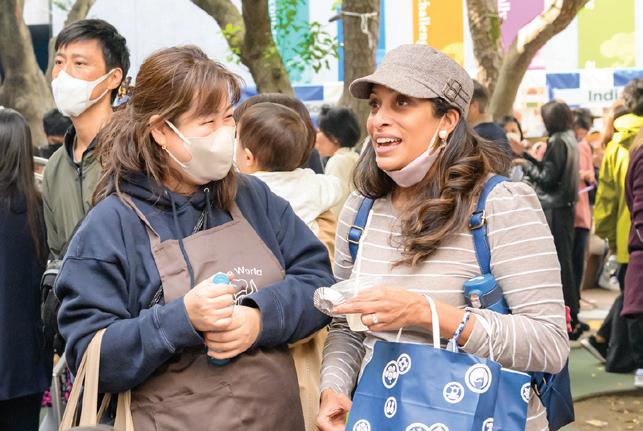
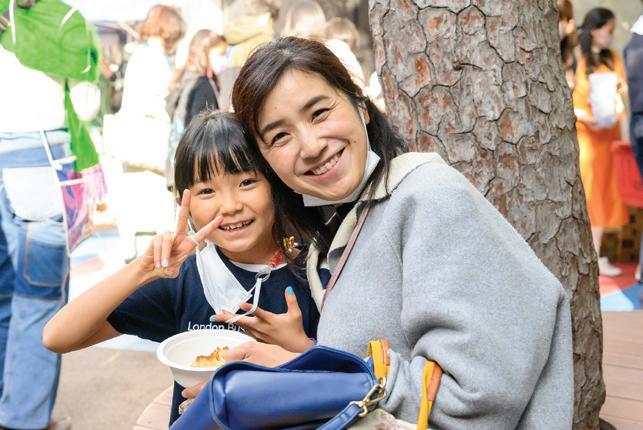


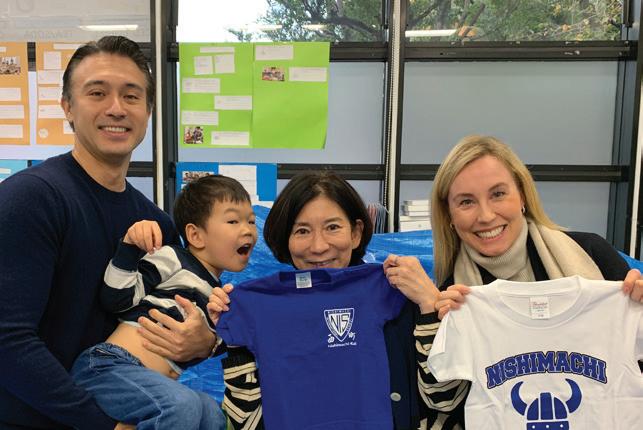
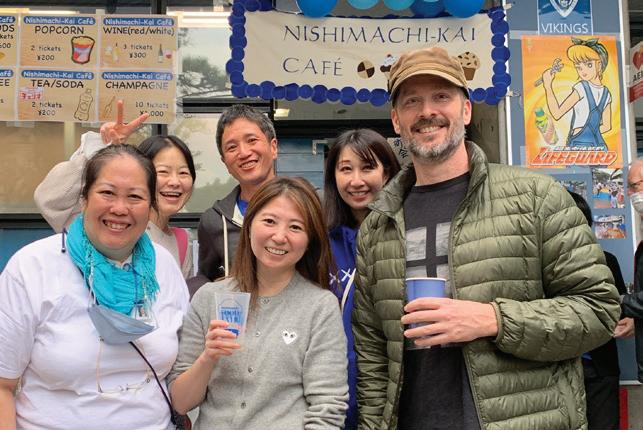
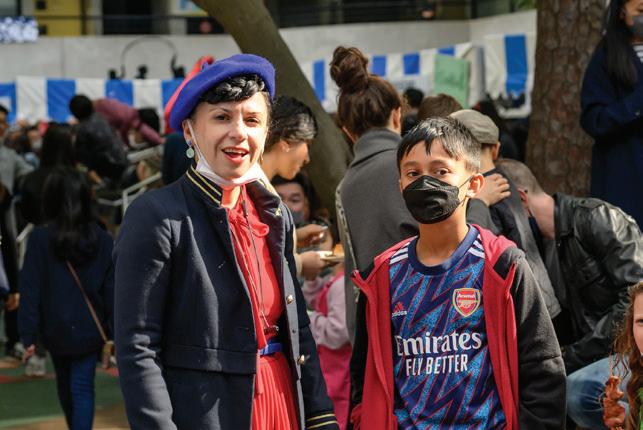

Fall/Spring 2022-2023 Vol. 69 25

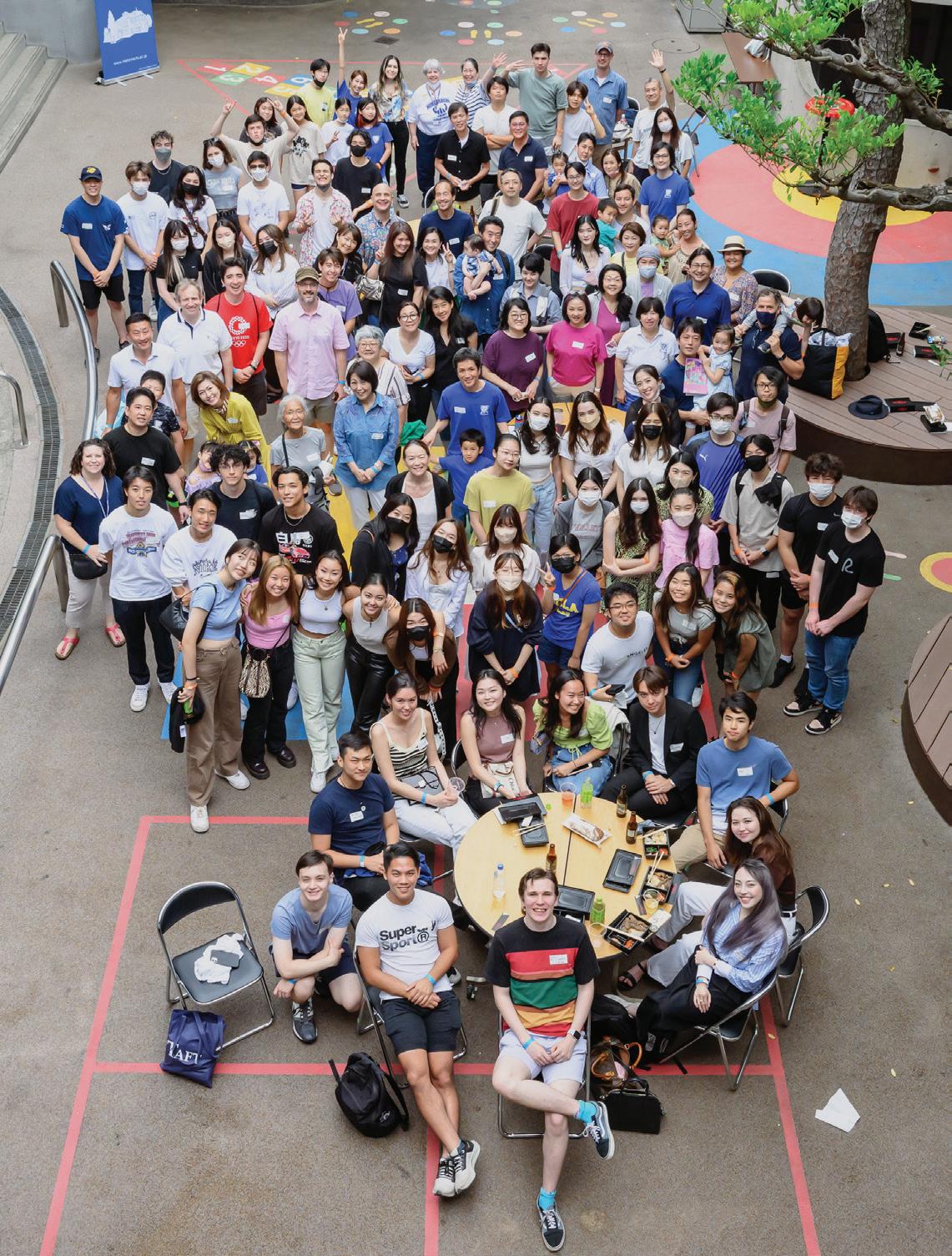
The Internationalist 26 Congratulations Class of 2022! SAVE THE DATE!
June 17 2023 Nishimachi-Kai Annual BBQ
details coming soon!
Saturday
More
Class of 2019 Universities Attending Class of 2022 High Schools Attending
American University, U.S.A.
The Australian National University, Australia
Babson College, U.S.A.
Bard College, U.S.A.
California Lutheran University, U.S.A.
Case Western Reserve University, U.S.A.
College of William and Mary, U.S.A.
Columbia University, U.S.A. (2)
Cornell University, U.S.A.
École Hôtelière de Lausanne, Switzerland
Fordham University, U.S.A. (2)
Georgetown University, U.S.A.
Grinnell College, U.S.A.
Haverford College, U.S.A.
International Christian University, Japan (3)
Johns Hopkins University, U.S.A.
Keio Gijuku University, Japan (2)
King’s College London, England (2)
New York University, U.S.A.
Newcastle University, England
Northeastern University, U.S.A. (2)
Pennsylvania State University, U.S.A.
Pitzer College, U.S.A.
Pomona College, U.S.A.
Queen’s University Belfast, Northern Ireland
Royal Melbourne Institute of Technology, Australia
San Diego State University, U.S.A.
San Jose State University, U.S.A.
Scripps College, U.S.A.
Sophia University, Japan
Sydney University, Australia
Tokai University, Japan
University of California, Santa Cruz, U.S.A.
University College London, England
University of Bath, England
University of New England, Australia
University of Oregon, U.S.A.
University of Pennsylvania, U.S.A.
University of Queensland, Australia
University of Southern California, U.S.A. (3)
University of Sydney, Australia
University of Toronto, Canada
University of Virginia, U.S.A.
University of Wisconsin-Oshkosh, U.S.A.
Waseda University, Japan (6)
Wesleyan College, U.S.A.
Gap year
American School In Japan (8)
British School in Tokyo (3)
Canadian International School Tokyo
Collège Alpin Beau Soleil, Switzerland
Edgemont Highschool, NY
Harpeth Hall School, TN
Hiroo Gakuen, Tokyo (2)
Hong Kong International School
ICU High School, Tokyo
IMG Academy, FL
Institut Montana Zugerberg AG, Switzerland (2)
International School of The Hague (ISH), The Netherlands
International School of the Sacred Hearts, Tokyo (2)
K.International School Tokyo
Keio Academy of New York, NY (2)
Kent School, CT
Larchmont Charter School, CA (2)
Mark Keppel High School, CA
Menlo-Antherton High School, CA
Mita International School, Tokyo (2)
Ojai Valley School, CA
Philipps Academy Andover, MA
Seisen International School, Tokyo (2)
Shibuya Makuhari Senior High School, Chiba
Shipley School, PA
St George’s British International School, Italy
St. Croix Lutheran Academy, MN
St. Mary’s International School, Tokyo (2)
Stanford Online High School, CA
Tokyo Metropolitan Kokusai High School, Tokyo
Trevor School, NY
Urban School of San Francisco, CA
UWC ISAK Japan (2)
UWC Maastricht, The Netherlands
Yokohama International School, Yokohama (7)
York Prep School, NY
Please accept our apologies if we overlooked your child’s school name in compiling the high school and university listings. This list was compiled with the help of class representatives, alumni and parents.
Fall/Spring 2022-2023 Vol. 69 27
P O S T M A R K S
PLEASE NOTE:
We have removed the Postmarks section (pages 28 - 33) from the online version for privacy reasons.


If you are a Nishimachi-Kai member, please email us at alumni@nishimachi.ac.jp

Connect With Us:


Nishimachi International School
@NishimachiOfcl
@NishimachiOfficial
Nishimachi International School
Nishimachi International School
Attention Nishimachi Alumni
Just like you, your classmates are always wondering what you have been up to. Write to your class representatives or write to us directly:
alumni@nishimachi.ac.jp
We would love to hear from you!
Fall/Spring 2022-2023 Vol. 69
In Memoriam
We were very sorry to hear of the passing of the following Nishimachi-Kai members and extend our deepest sympathy to their families.
Judith Ann Hickey, former Kindergarten, Elementary and Junior High teacher ‘75-80, wife of Carl and mother to Cristin Hickey, ‘85, Laurie Hickey May ‘82, and Justin Hickey ‘83, December 30, 2022. Please scan the QR Code to read the obituary for Judith Hickey.

Yako Hirai, Class of 1975, October 2022
Koichiro Ishii, former Trustee, February 2022
William Perrin, August 2022
Dr. Junichi Suzuki, January 2022
Grace Tanaka, Class of 1980, June 2022
Akira Yagishita, former Registrar, 2004-2022
It is with deep sadness that we let you know of the passing of our long-time school registrar, Ms. Akira Yagishita. Yagishita-san, who helped a generation of students and their families transition to new schools over her tenure, passed away on Tuesday, January 3, 2023 after a battle with cancer. We are heartbroken to have lost such a wonderful colleague and friend. She will be missed by many.
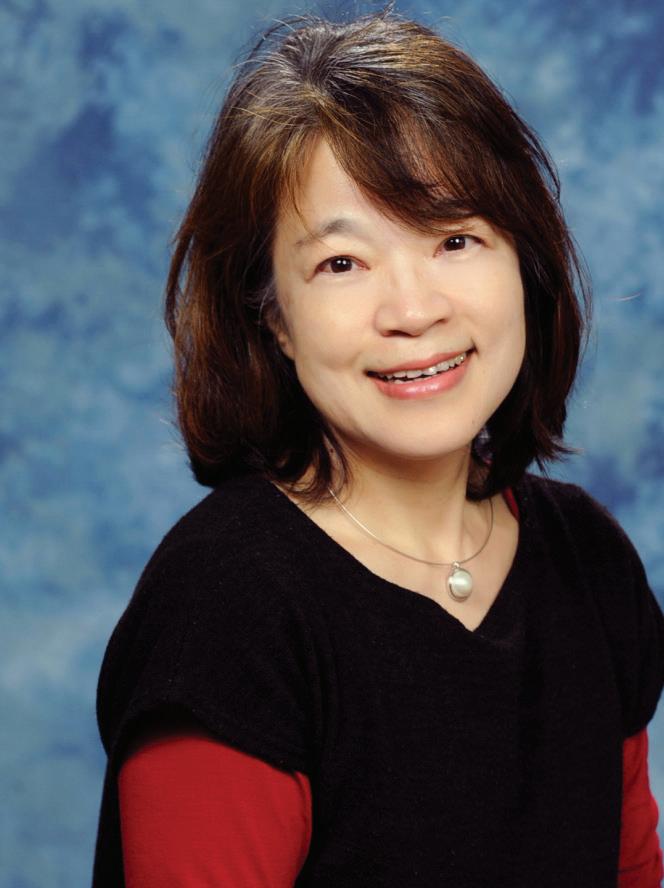
The Internationalist 34
Welcome to the Nishimachi Family.


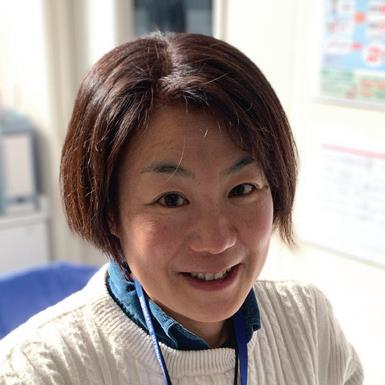
2021-2022 Departures
Good luck with your future endeavors. We’ll miss you!
John Beirne, Celiah Bunsie, Joshua Chan, Kyle Deck, Karen Dobbie-Hunter, Joanne Gauthier, Erica Grainger, Susan KS Grigsby, Ruth Hazelton, Keiko Isobe-Hotta, Hayley Jeanes, Michael Johnson, Emily Morley, Erin O’Dwyer, Satoko Saito, Katie Schroder, Marie Staples, Brian Webb
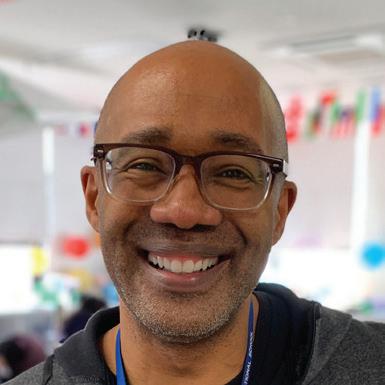
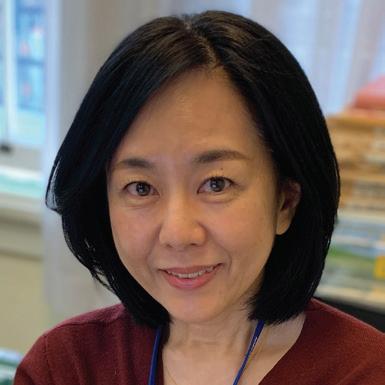




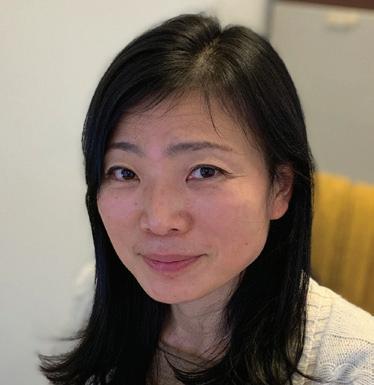


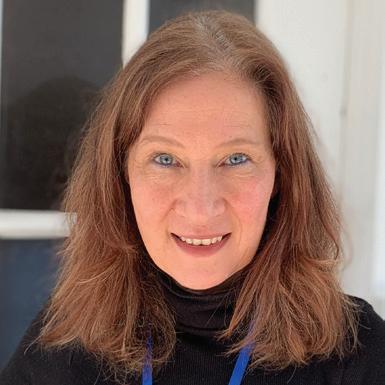

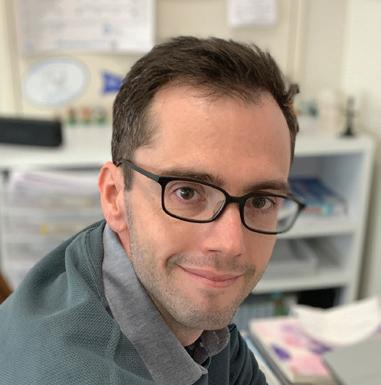

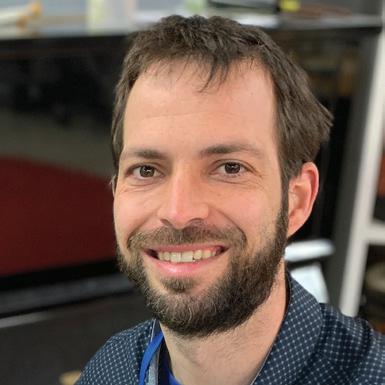
Fall/Spring 2022-2023 Vol. 69 35
Y O K O S O !
S A Y O N A R A !
Nozomu Kuroyanagi Nurse
Matt Matuszek MS Music Teacher
Damien Pitter MS Counselor
Yoshi Yamaguchi Grade 2 Teacher
James Langstone Grade 3 Teacher
Katie Mayne Curriculum Coordinator
Martina Schaefer MHM Curator
Michael Armstrong ELL Specialist
Dominique Lutringer ES Art Teacher
Yuko Okada HR Manager
Charlotte Ashcroft ES counselor
Kaori Maeda Kinder Assistant
Mark Paxton Assistant ES Principal
Kim Auker Kinder Teacher
Grace Liu Grade 5 Teacher
Akiko Morinaka Registrar
Ray Speed Grade 5 Teacher
YOUR GIFT HELPS US TO MATCH POTENTIAL WITH OPPORTUNITY.

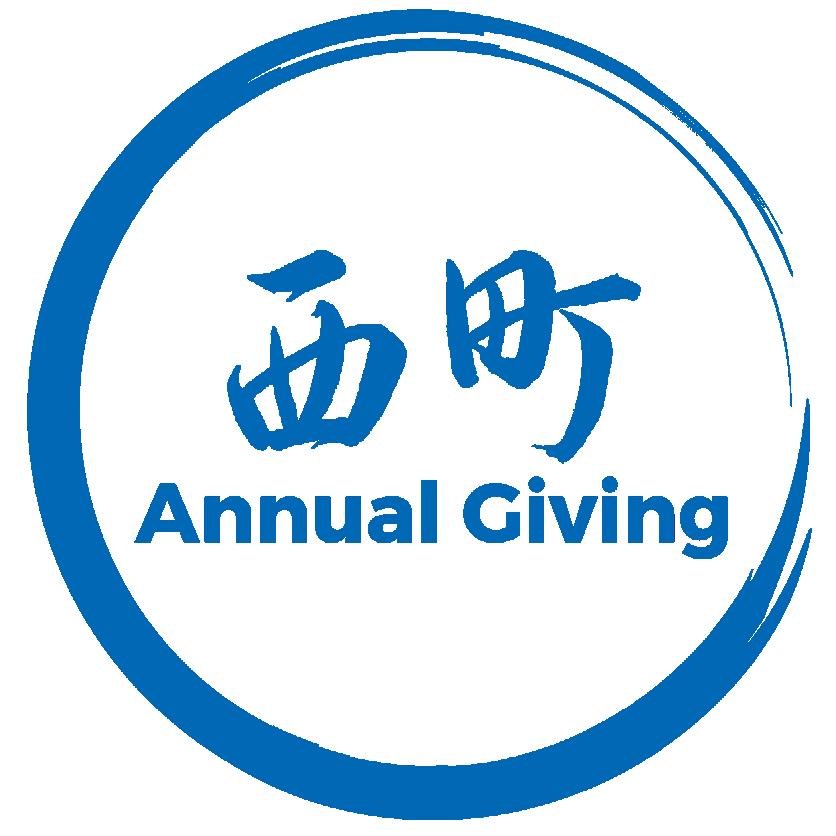


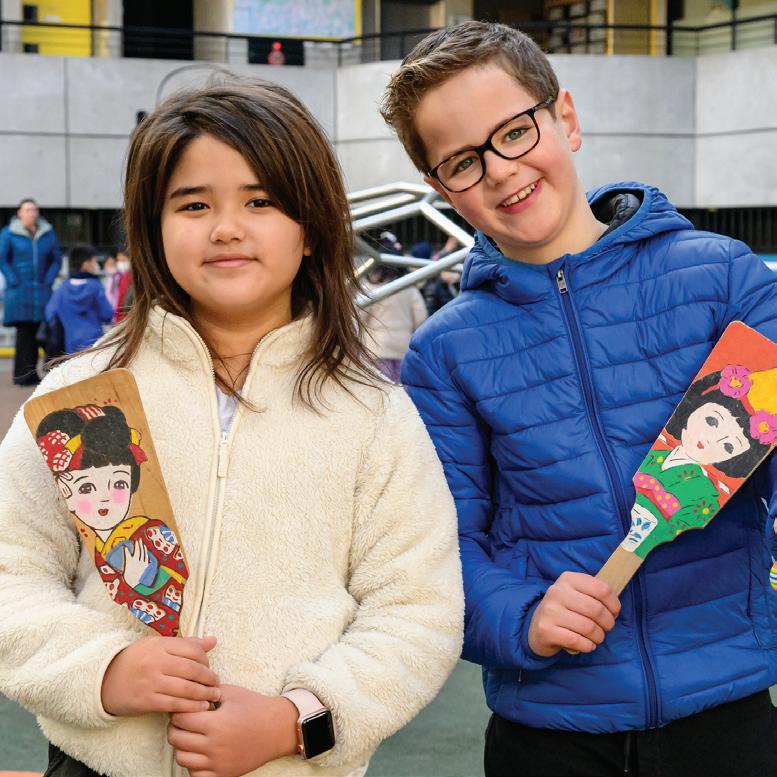
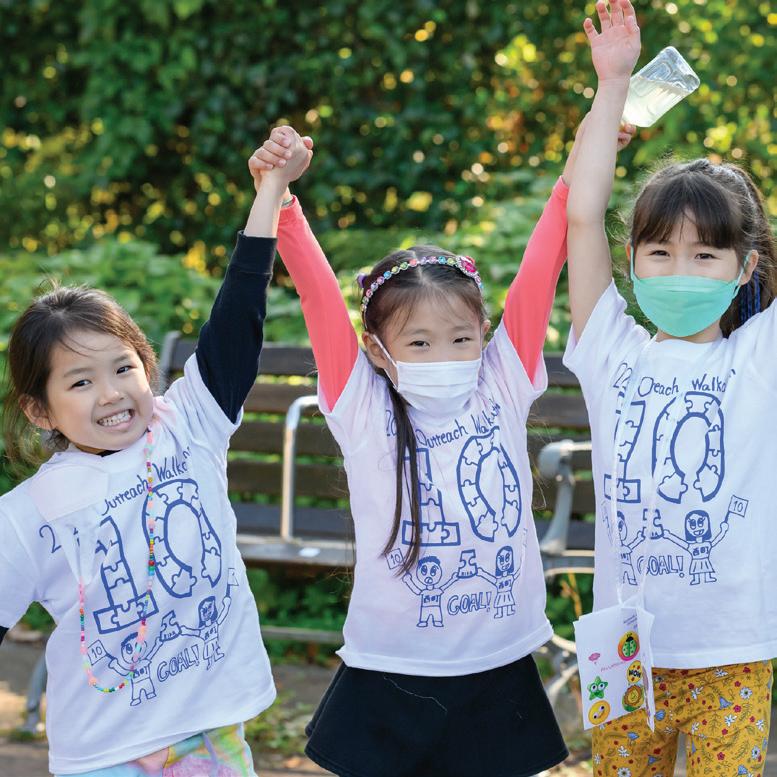


www.nishimachi.ac.jp/giving











































































































































